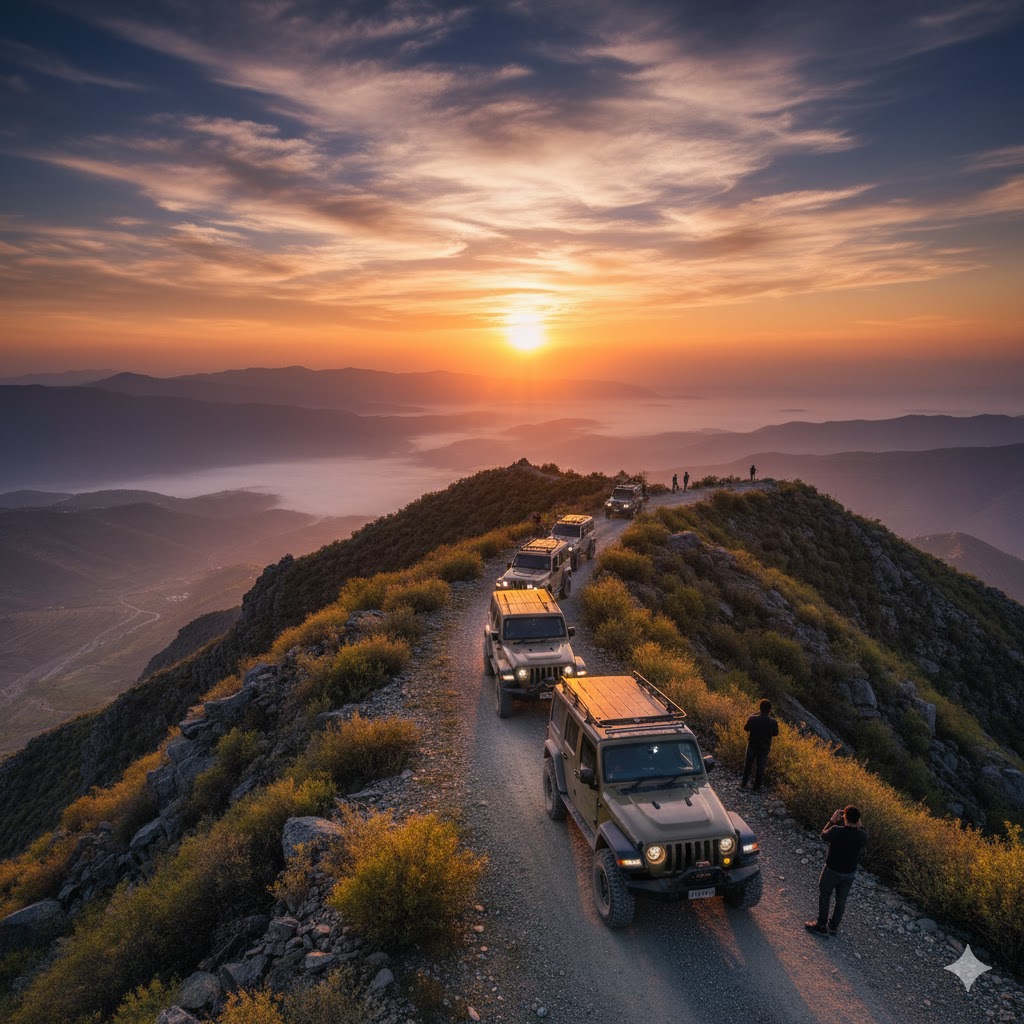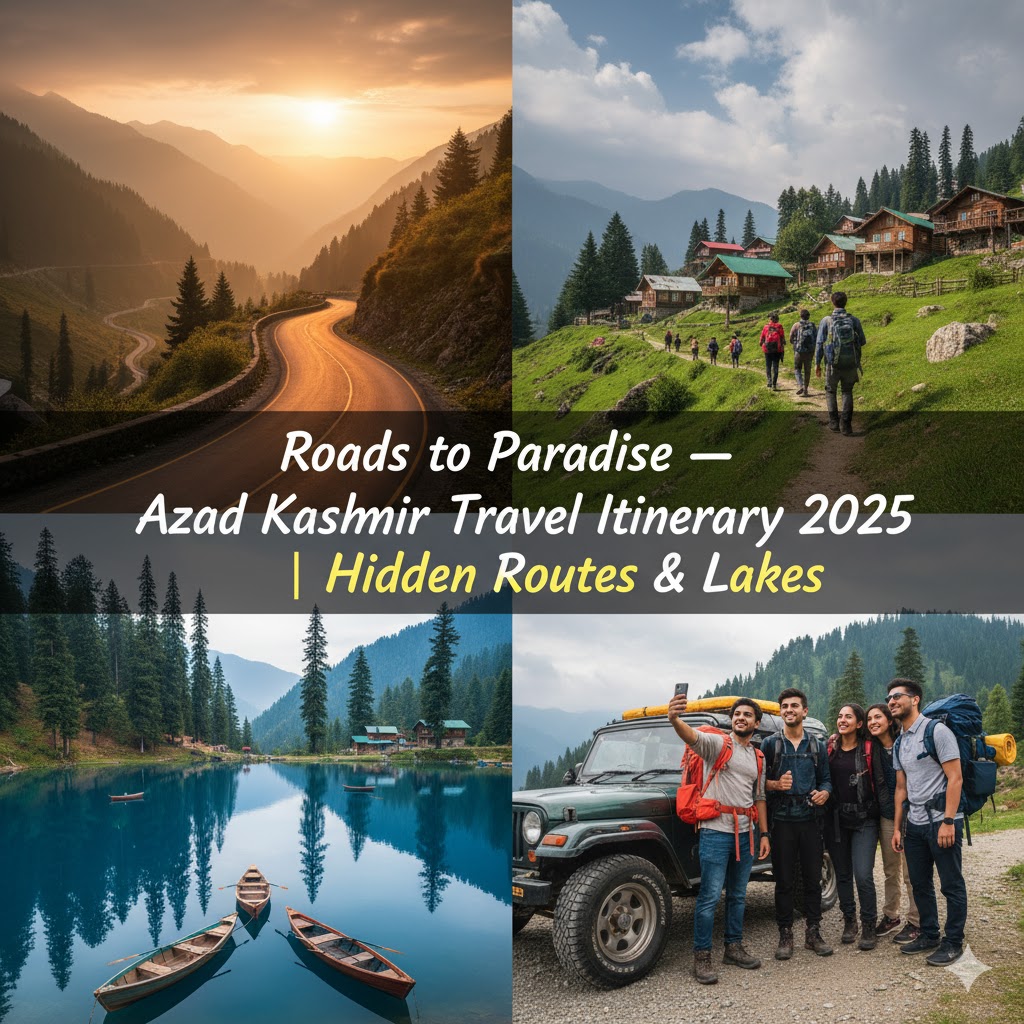Table of Contents – Azad Kashmir Travel Itinerary
- Introduction — Journey into Azad Kashmir’s Natural Paradise
- Understanding Permits & Entry Rules (Updated 2025)
- How to Reach Azad Kashmir — Routes from Islamabad, Lahore & Gilgit
- Neelum Valley — Lakes, Villages & Local Life
- Leepa Valley — Hidden Villages Beyond the Pines
- Rawalakot & Banjosa — Lakeside Escapes
- Forward Kahuta & Toli Peer — The Misty Meadows
- Arang Kel & Kel — The Fairytale of Kashmir
- Travel Tips, Budget & Best Time to Visit
- FAQs for Azad Kashmir 2025 Itinerary
- Conclusion
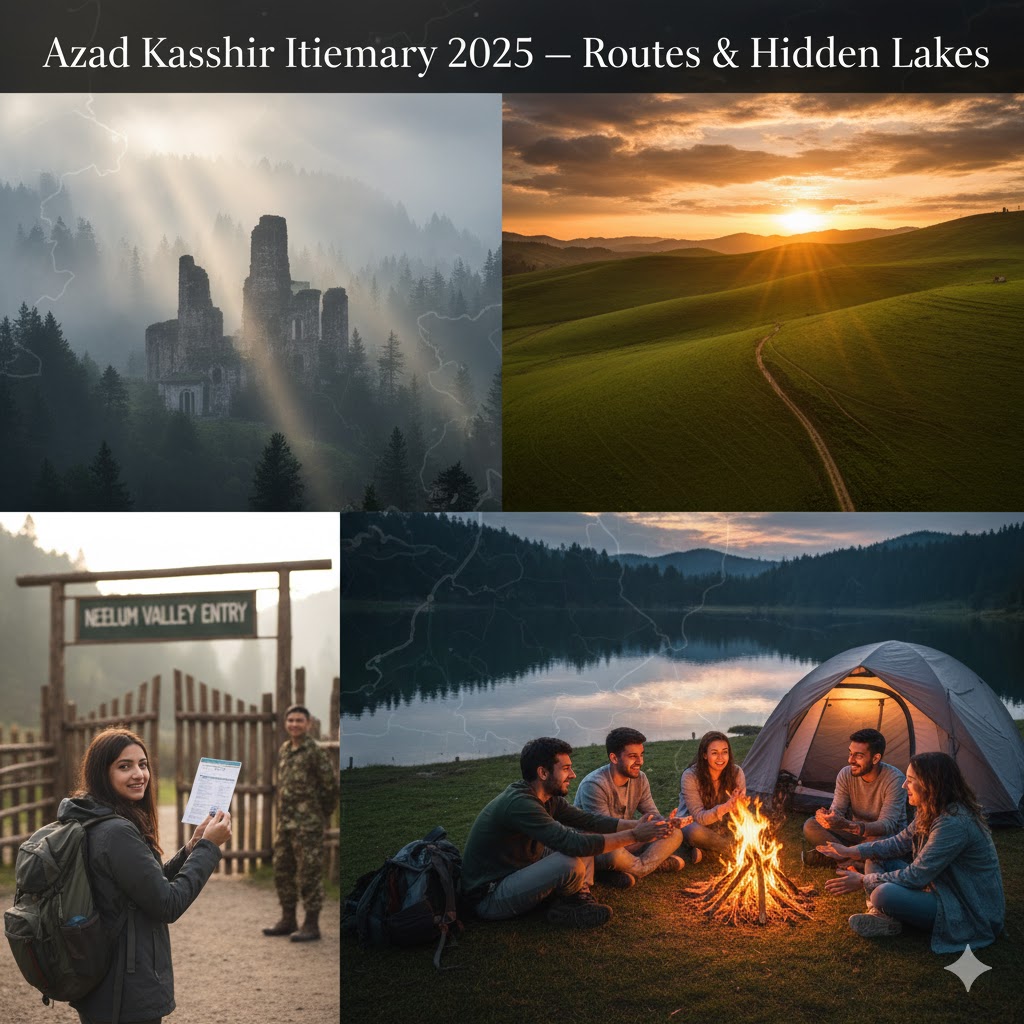
Introduction — Journey into Azad Kashmir’s Natural Paradise
There’s a reason travelers call Azad Kashmir the emerald crown of Pakistan. Cradled between the snow-clad Himalayas and lush pine valleys, this region unfolds like a dream — crystal rivers, alpine meadows, terraced fields, and mountain villages that feel untouched by time.
In 2025, Azad Kashmir travel itineraries are more refined than ever before. With improved road networks, upgraded guesthouses, and eco-tourism policies, it’s now easier for travelers, students, and backpackers to experience this green heaven responsibly.
Whether you’re venturing from Islamabad, Lahore, or Gilgit, your journey through Neelum Valley, Rawalakot, and Leepa will reveal a living canvas of culture and tranquility.
The best part? This region remains deeply connected to its roots — every wooden home, every cup of pink Kashmiri chai, every local smile tells a story of resilience and love for the land.
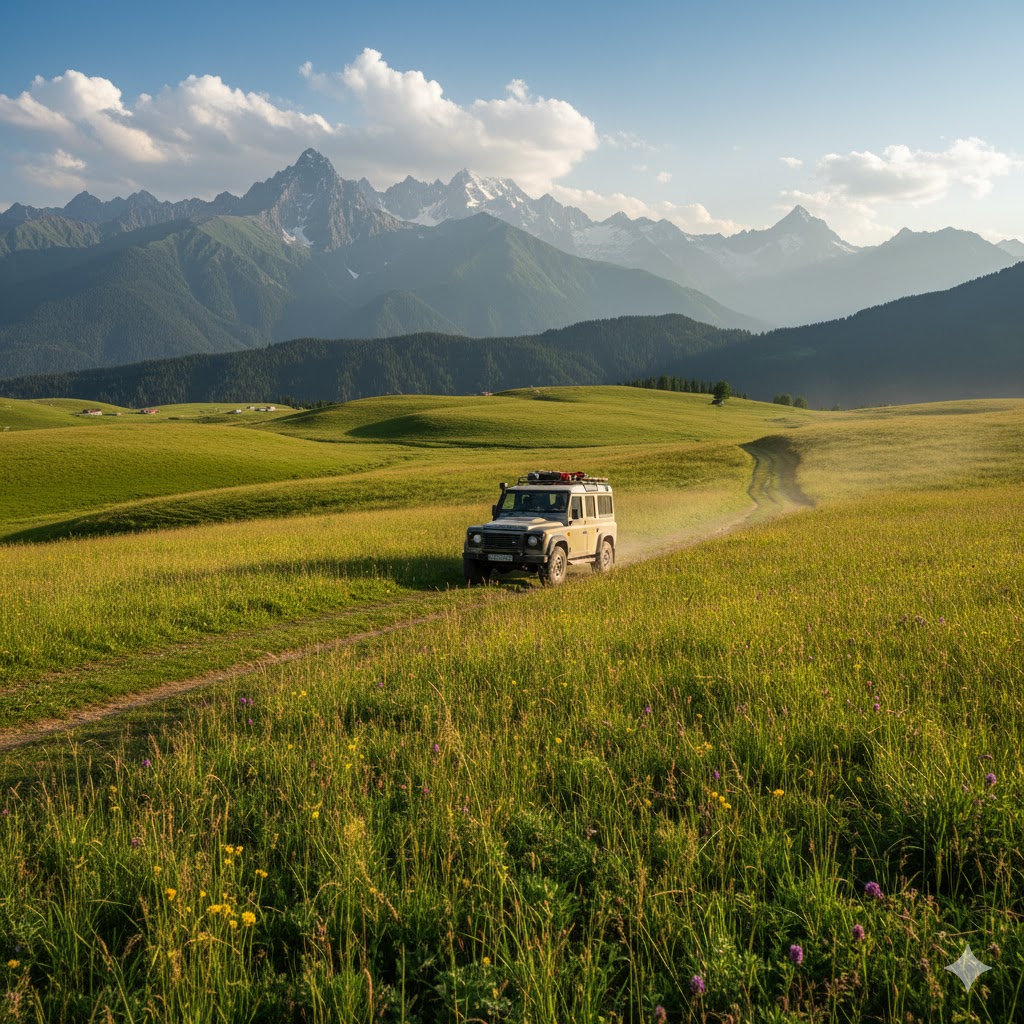
Must See: Discover Hidden Lakes of Northern Pakistan — 2026 Guide
Source: Pakistan Tourism Development Corporation — Azad Kashmir
🧾 Understanding Permits & Entry Rules (Updated 2025)
Before packing your bags, it’s crucial to understand the permit system that governs entry into Azad Kashmir. While Pakistani citizens can travel freely across most valleys, certain border-adjacent zones require NOC (No Objection Certificate) for foreigners and even domestic travelers planning extended stays.
Here’s a detailed breakdown:
| Region | Permit Required (2025) | Issuing Authority | Processing Time | Valid Duration |
|---|---|---|---|---|
| Neelum Valley (beyond Kel) | ✅ Yes (for foreign tourists) | Home Department, AJK Govt | 2–3 working days | 10–14 days |
| Leepa Valley | ✅ Yes (Pakistani & foreign visitors) | DC Office Muzaffarabad | 1–2 days | 7 days |
| Forward Kahuta / LOC zones | ✅ Restricted | Pakistan Army / DC Office | Case-based | Limited |
| Rawalakot, Banjosa, Toli Peer | ❌ No | — | — | Unlimited stay |
| Arang Kel, Sharda, Keran | ❌ No | — | — | Unlimited stay |
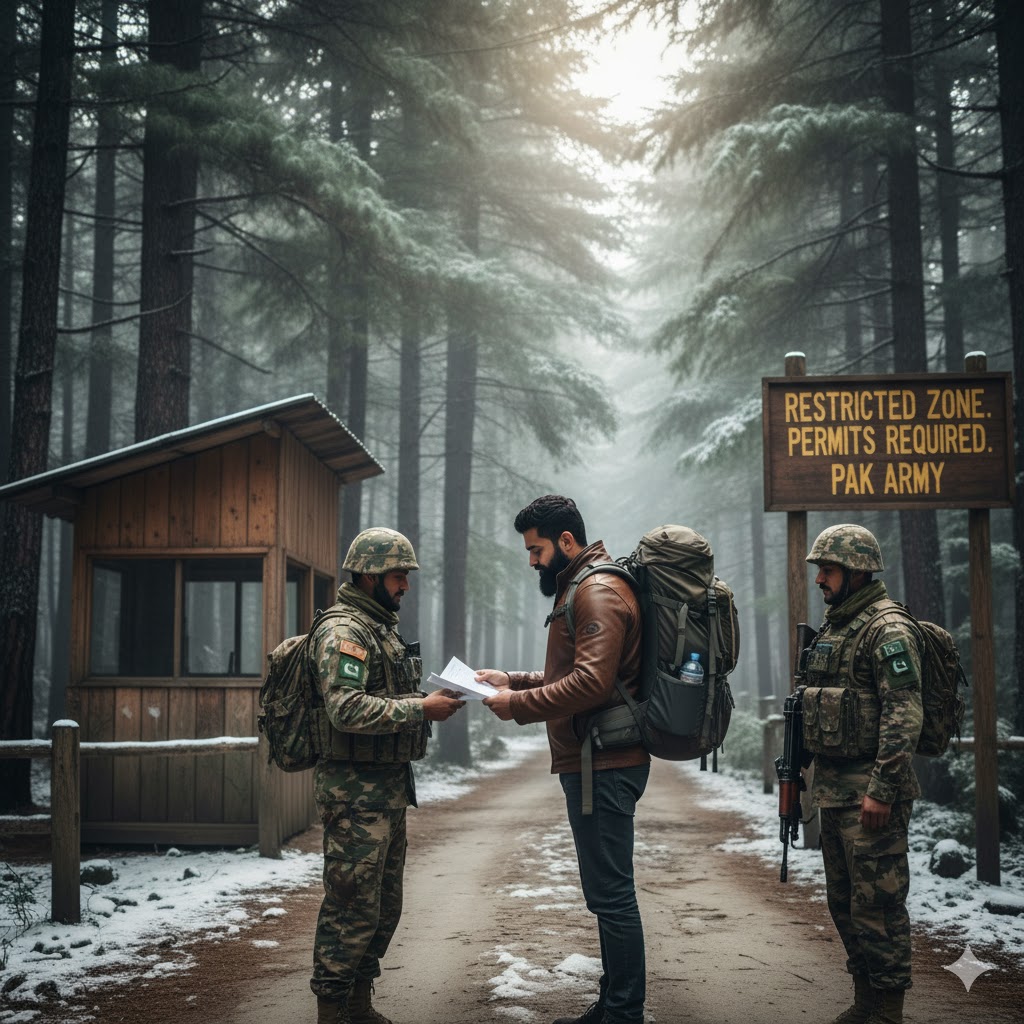
How to Apply for Travel Permits (2025 Update)
- For Foreign Tourists:
Apply through the AJK Home Department in Muzaffarabad or via your embassy channel. Submit your passport copy, visa, itinerary, and hotel confirmation. - For Domestic Travelers (Pakistani Nationals):
For Leepa or Forward Kahuta, submit your CNIC, route plan, and vehicle details at the local DC office. Permits are usually free of charge. - Online Applications:
In 2025, a pilot e-permit system has been introduced for foreign hikers heading to Kel–Taobat. This digital form simplifies NOC processing and is available via the official AJK tourism portal. - On-Ground Verification:
At checkpoints (such as Athmuqam and Kel), carry your original CNIC or passport, plus a photocopy. Respect all instructions from military and police officers.
Local Tip: Always keep at least three copies of your permit — one for checkpoints, one for hotel registration, and one for backup.
Hidden Gem: Some hotels in Muzaffarabad and Keran now provide permit facilitation services for tourists — inquire during booking.
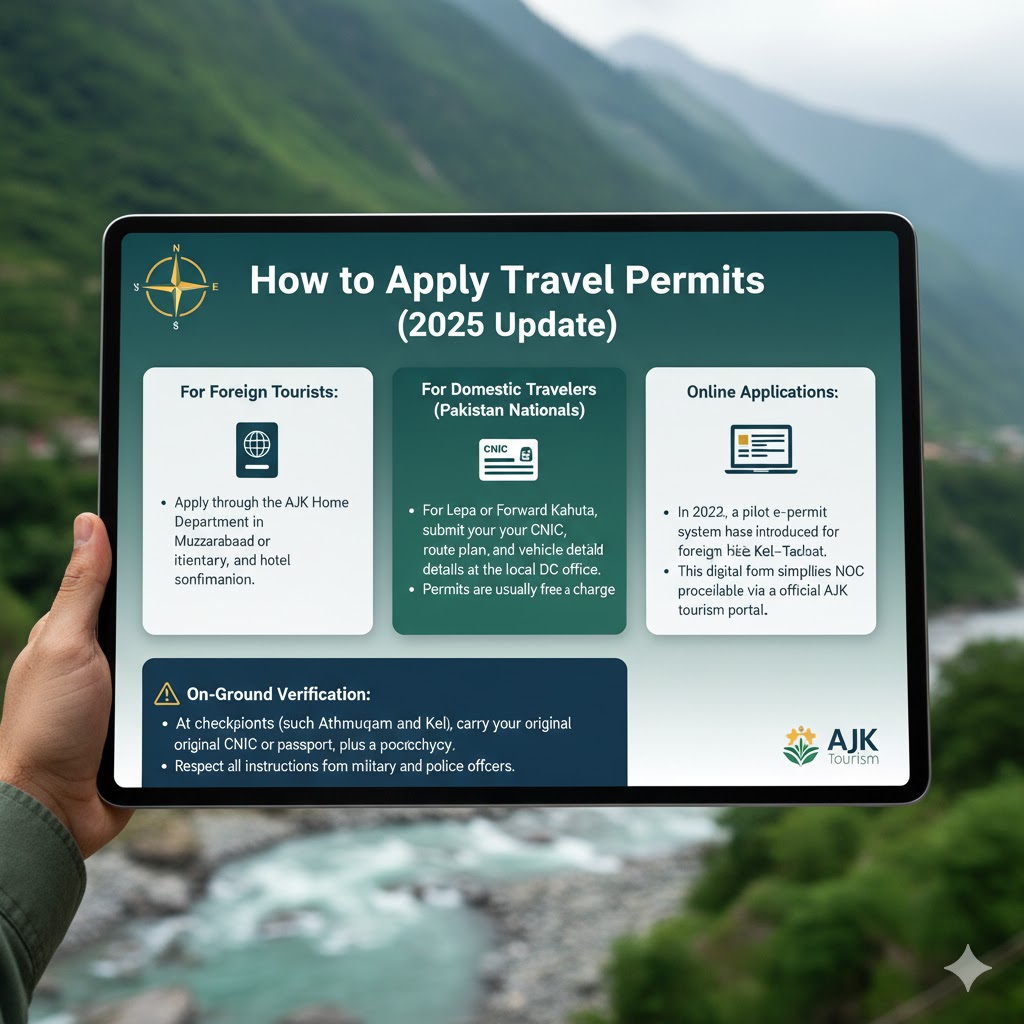
Source: AJK Government Tourism Portal – ePermit Section
🗺️ How to Reach Azad Kashmir — Major Access Routes (2025 Edition)
Azad Kashmir can be accessed through several scenic routes from Pakistan’s main cities. Whether you’re driving your own vehicle, joining a travel group, or using local transport, these routes guarantee breathtaking road experiences.
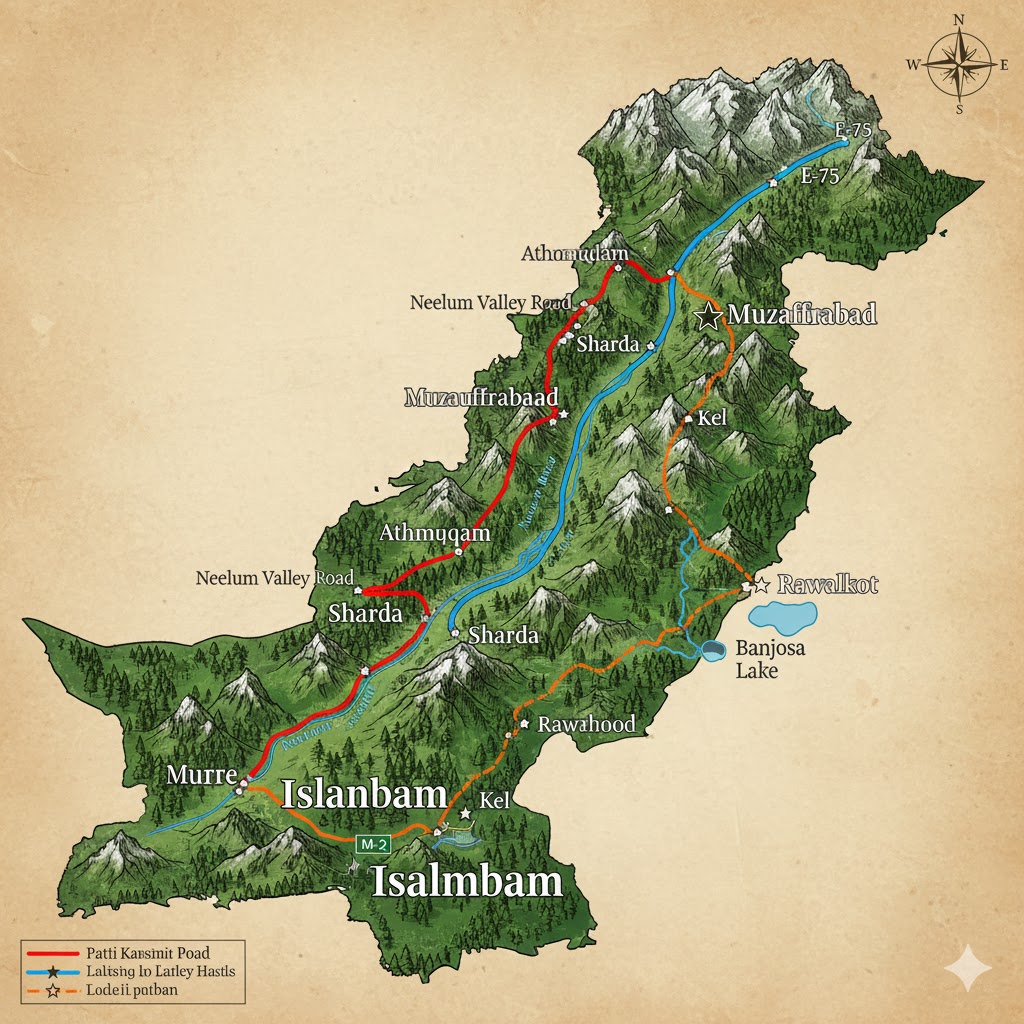
🚗 1. Islamabad to Muzaffarabad (Gateway to Kashmir)
- Route: Islamabad → Murree → Kohala → Muzaffarabad
- Distance: ~135 km (4.5 hours drive)
- Highlights: Pine forests, hilltop chai dhabas, panoramic views near Kohala Bridge.
College Tip: Take a short stop at Kohala Bridge viewpoint — it marks the official gateway into Azad Kashmir and offers incredible photography at dawn.
Local Insight: For students or group travelers, shared vans leave every hour from Pir Wadhai terminal (Rawalpindi) costing around PKR 1000–1500 per seat.
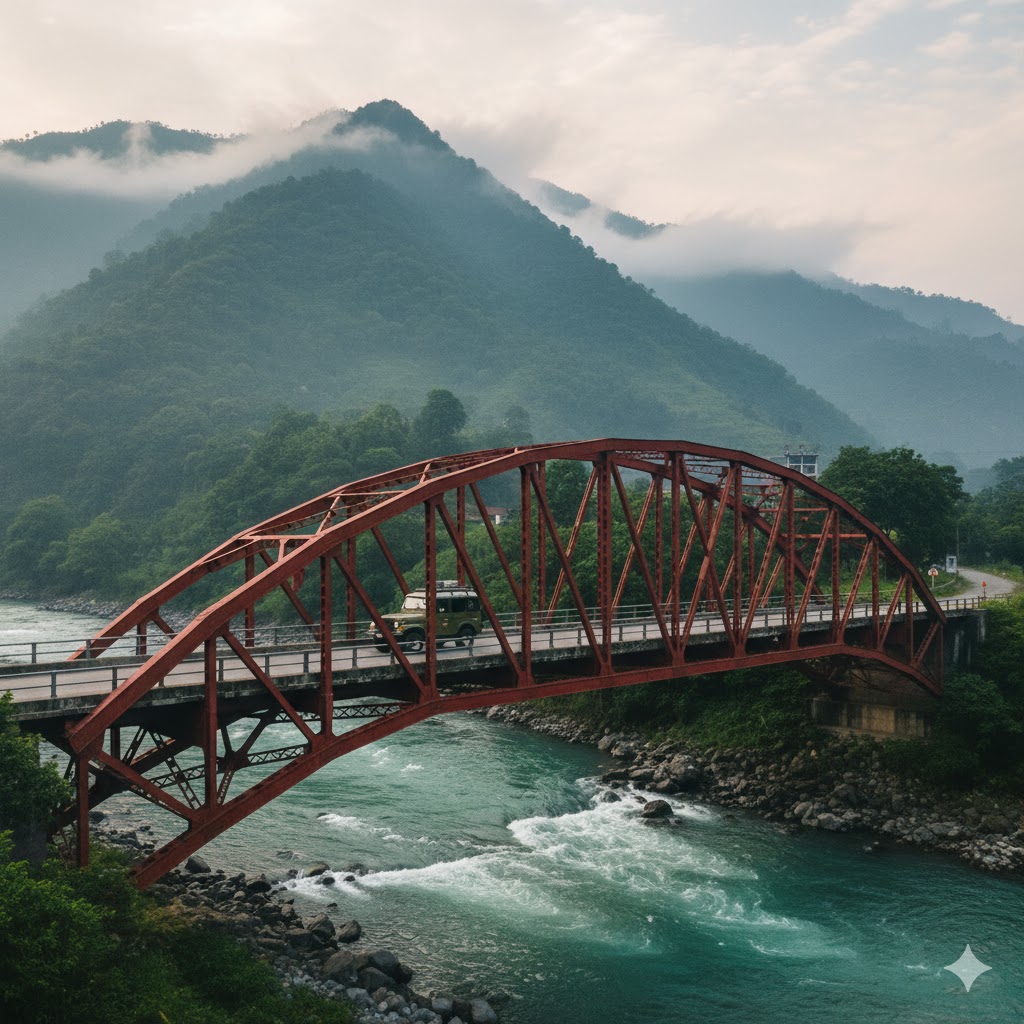
🚐 2. Islamabad to Rawalakot & Banjosa
- Route: Islamabad → Kahuta → Azad Pattan → Rawalakot → Banjosa Lake
- Distance: ~165 km (5–6 hours drive)
- Road Type: Smooth paved roads; occasional sharp bends near Azad Pattan.
- Permit: Not required.
Highlight: Banjosa Lake is a serene mountain lake surrounded by pine trees, offering boating and lakeside camping. Perfect for weekend getaways.
Local Tip: Travel early morning to catch the reflection of sunrise on the lake surface — a favorite among vloggers.
Hidden Gem: The lesser-known Toli Peer Meadows, just 40 km from Rawalakot, provide panoramic sunset views across Poonch Valley.
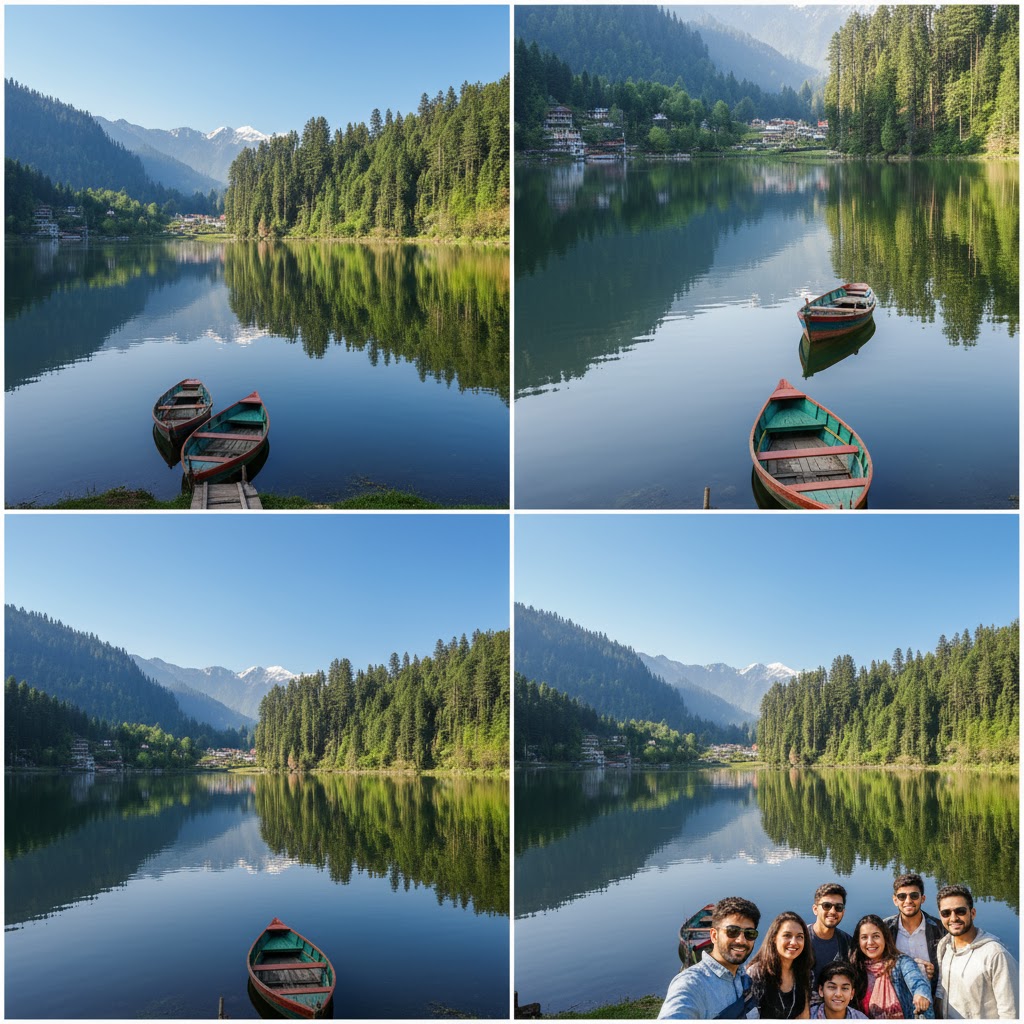
Must Visit: Top Tourist Events to Attend in Pakistan 2026
🚙 3. Neelum Valley Route — Muzaffarabad to Taobat
This is the most scenic and popular route among all. Each kilometer takes you deeper into Kashmir’s untouched wilderness.
| Segment | Distance (km) | Highlights |
|---|---|---|
| Muzaffarabad → Patikka | 20 | River views, small cafes |
| Patikka → Keran | 40 | Border views, local trout fish |
| Keran → Sharda | 35 | Historical sites, riverside inns |
| Sharda → Kel | 30 | Forest tracks, wooden bridges |
| Kel → Arang Kel (on foot) | 2 km uphill | Trekking route, valley panoramas |
| Kel → Taobat | 30 | Remote alpine villages |
Local Advice: Hire a local 4×4 jeep from Keran or Sharda — it costs about PKR 7000–10,000 per day but gives flexibility for stops and hidden viewpoints.
Hidden Gem: Between Keran and Sharda, there’s a small riverside village called Dudhniyal, known for its pink apples and organic honey. Most travelers miss it!
Source: Neelum Valley Travel Guide – Dawn Travel Section
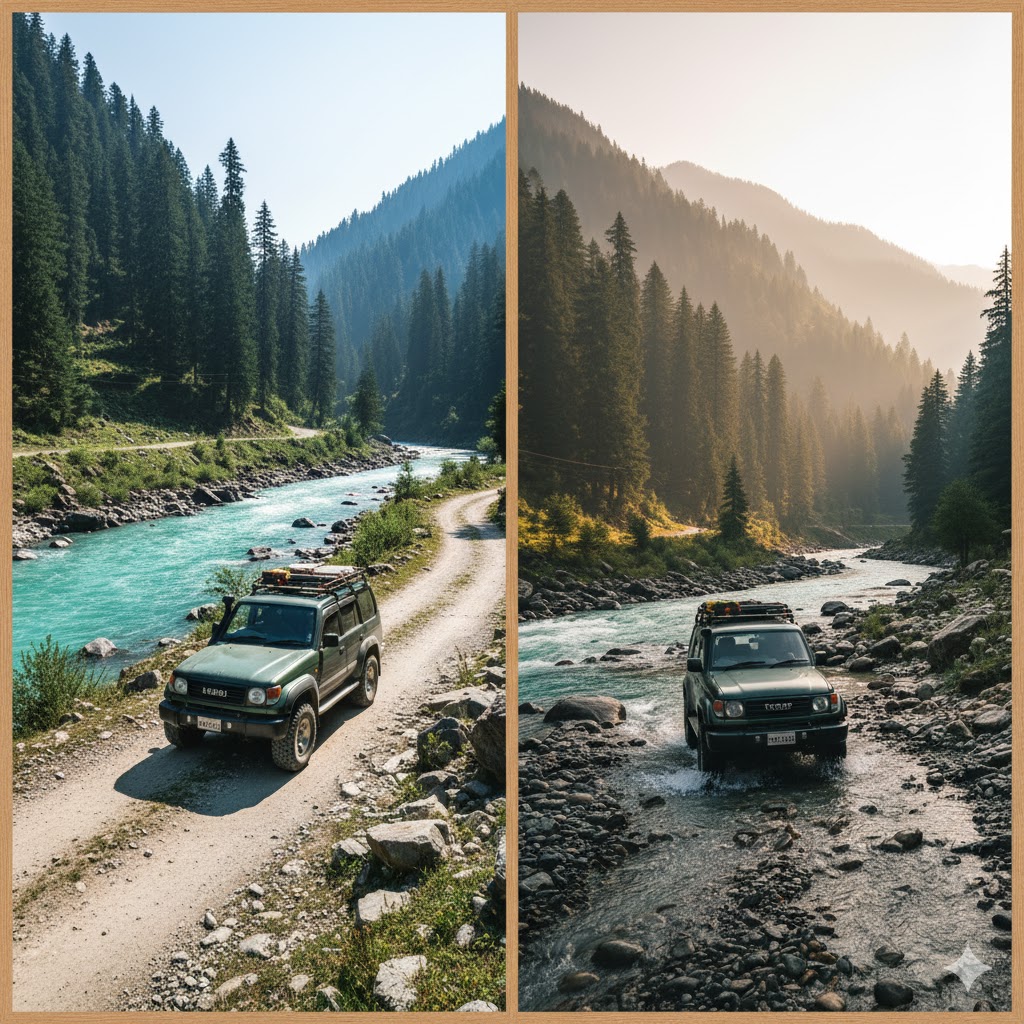
🏞️ 4. Leepa Valley Access — The Hidden Treasure Route
The Leepa Valley route remains one of the most adventurous yet rewarding paths in Azad Kashmir.
- Route: Muzaffarabad → Reshian → Leepa Valley
- Distance: 100 km (approx. 6–7 hours due to steep mountain roads)
- Permit: Required (from DC Office, Muzaffarabad)
Highlights: Wooden Kashmiri homes, terraced fields, snow peaks, and the Leepa River flowing through pine-covered hills.
Local Tip: Visit in May–September for road accessibility. In winter, heavy snowfall blocks passes for weeks.
Hidden Gem: Chananian Village — a secluded spot surrounded by walnut trees and known for traditional Kashmiri woodcrafts.
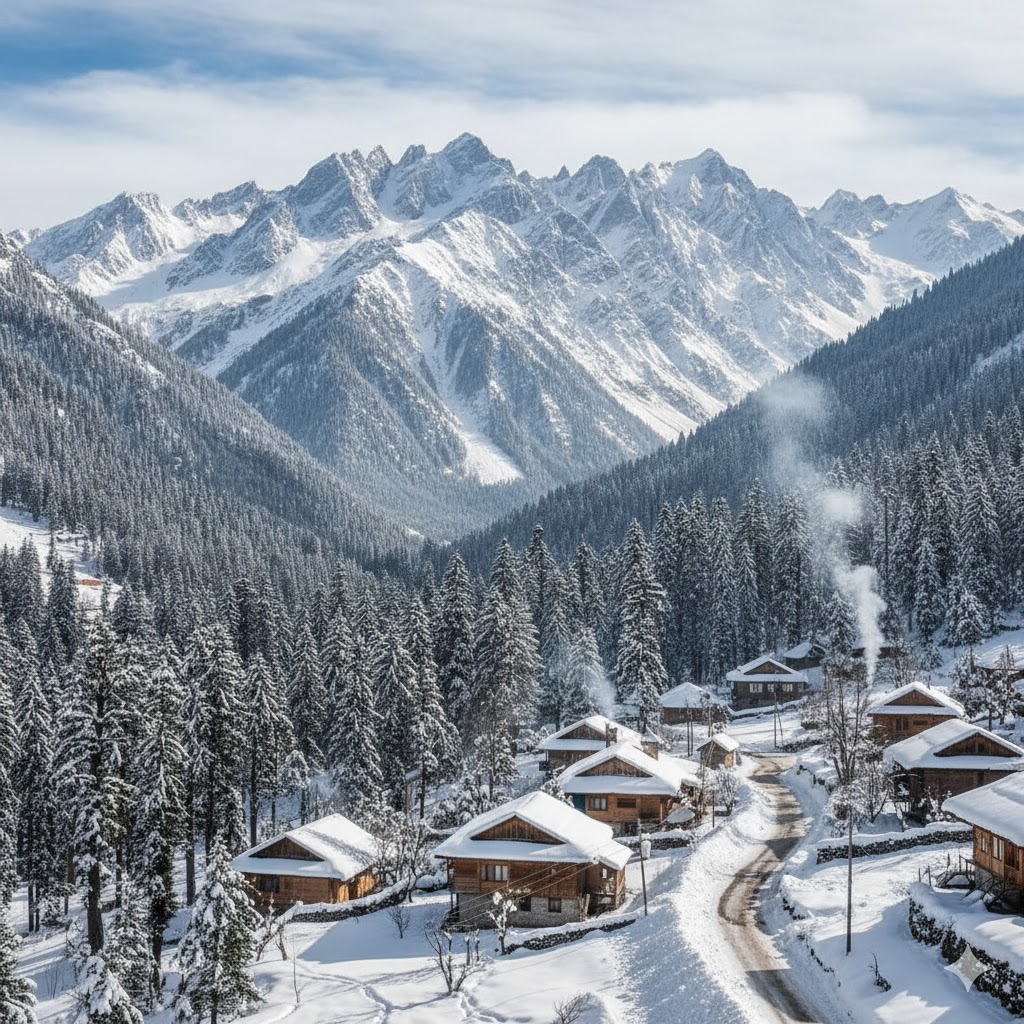
🏕️ 5. Gilgit–Astore to Neelum Valley Cross-Link Route (For Adventure Seekers)
For overlanders and adventure bikers, 2025 brings a new route connecting Astore Valley (Gilgit-Baltistan) to Taobat (Neelum Valley).
This route, once limited to locals, is now open with special permits for guided tours.
Route Highlights:
- Drive across Burzil Pass (13,000 ft) — stunning alpine meadows and glacier rivers.
- Camp overnight near Minimarg — a paradise of pine trees and trout streams.
- Continue to Taobat, where Gilgit and Kashmir landscapes merge.
Permit Requirement: Mandatory army clearance from both Astore and Kel sectors.
Tip: Ideal for university adventure clubs with experienced drivers.
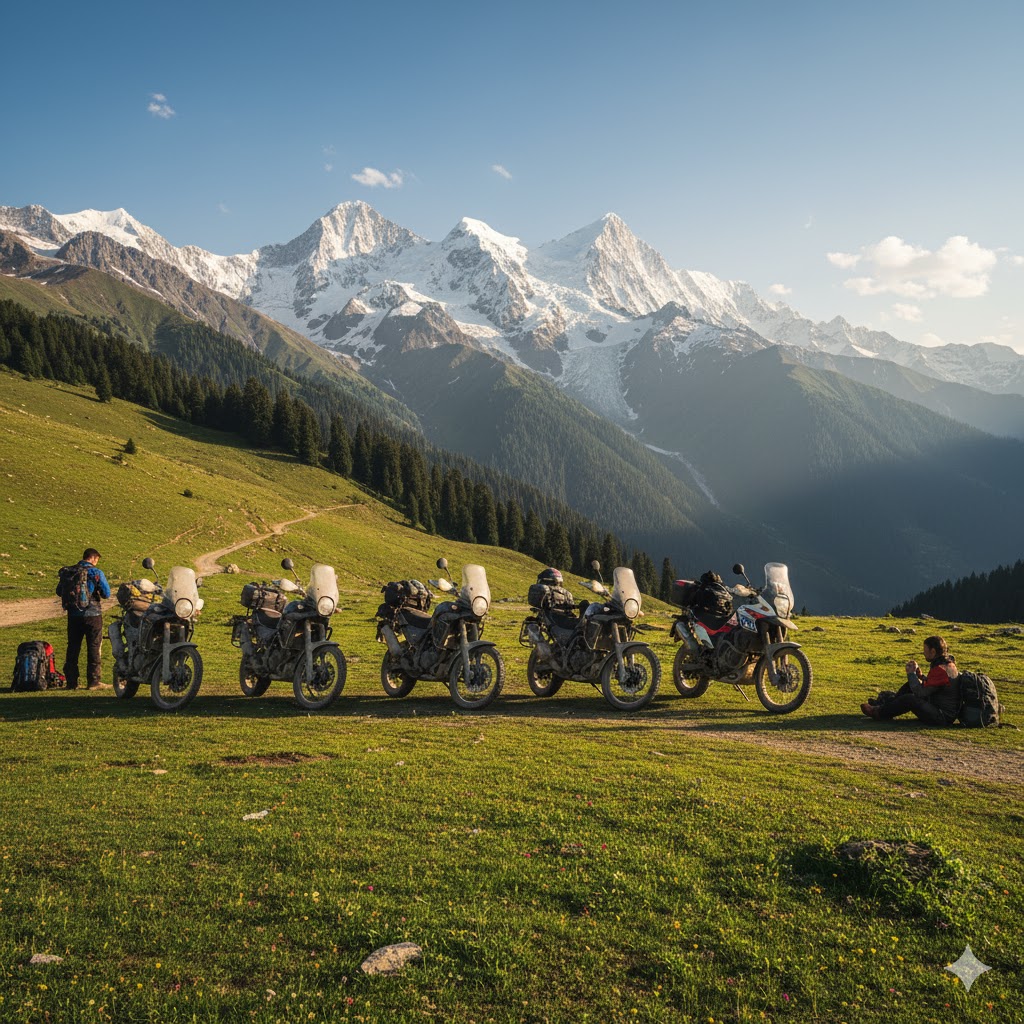
Exploring the Northern Majesty: Neelum Valley Route
Neelum Valley, often described as the crown of Azad Kashmir, offers an endless stretch of emerald-green valleys, snow-fed rivers, and picturesque villages.
The journey begins from Muzaffarabad, following the Neelum River that snakes its way through dramatic gorges.
From Athmuqam to Kel, every stop unveils unique charm — wooden houses perched over cliffs, hanging bridges, and alpine meadows blooming with wildflowers.
Travelers should secure foreign tourist permits from the Deputy Commissioner’s Office in Muzaffarabad (for restricted zones like Kel, Arang Kel, and Taobat).
These permits are usually issued within 24–48 hours, requiring a valid passport copy and itinerary details.
Local Tip: Visit the Upper Neelum viewpoint near Keran for a stunning sunrise — you’ll see both Pakistani and Indian-administered Kashmir valleys split by the Neelum River.
Hidden Gem:
- Shounter Valley, accessible via Jeep track from Kel, leads to the ethereal Shounter Lake, one of the most untouched alpine lakes in northern Pakistan.
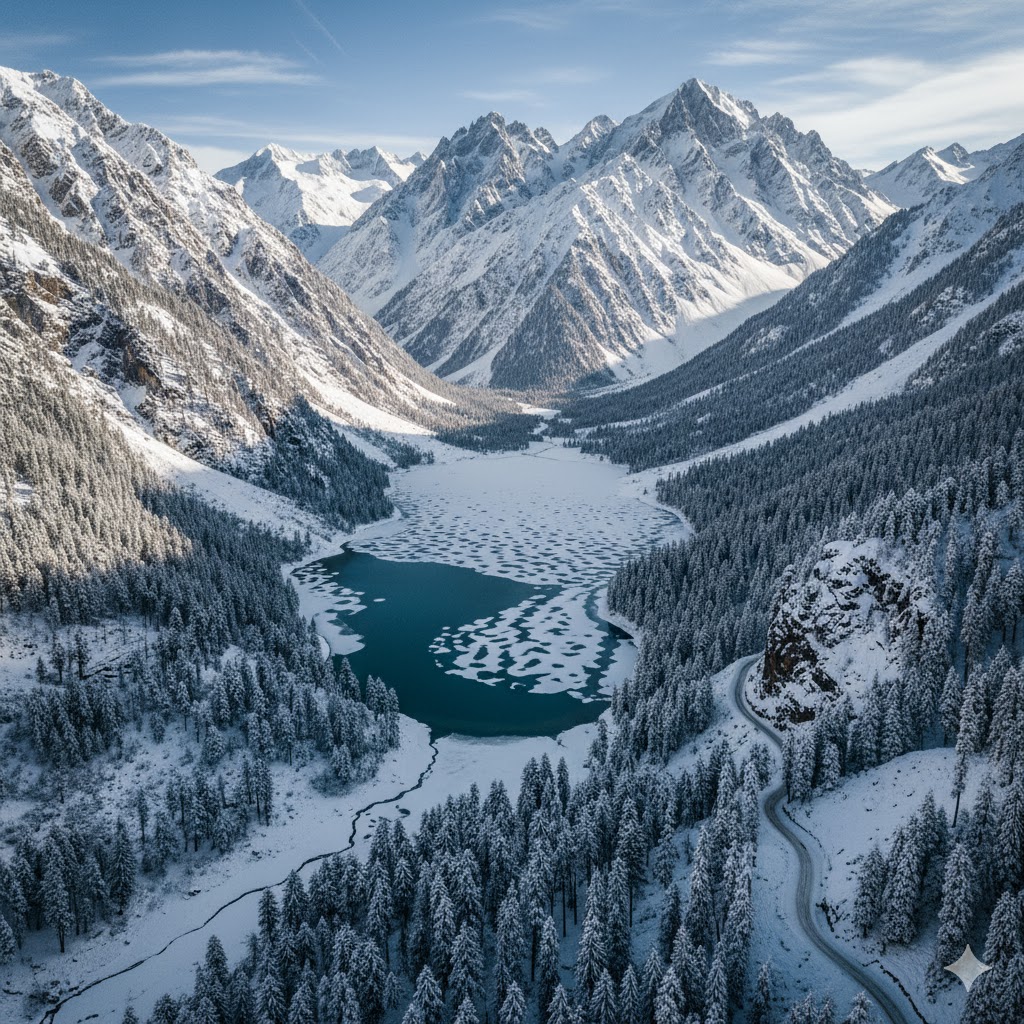
Arang Kel — The Crown Jewel of Neelum
Perched high above Kel, Arang Kel is often called the paradise above the clouds.
To reach this village, one must cross a swaying suspension bridge over the Neelum River and then trek 2.5 km uphill.
Though challenging, the reward is immense — emerald meadows surrounded by snow peaks, local wooden lodges serving Kashmiri tea, and breathtaking stargazing nights.
Permit Information:
Foreign tourists need to show their Muzaffarabad permit at the Kel checkpoint.
No entry fee applies, but staying overnight requires hotel registration with the local police.
Local Experience:
- Visit Arang Kel viewpoint during golden hour for the best photography.
- Try Kashmiri pink tea (Noon Chai) at a small café run by locals for an authentic taste.
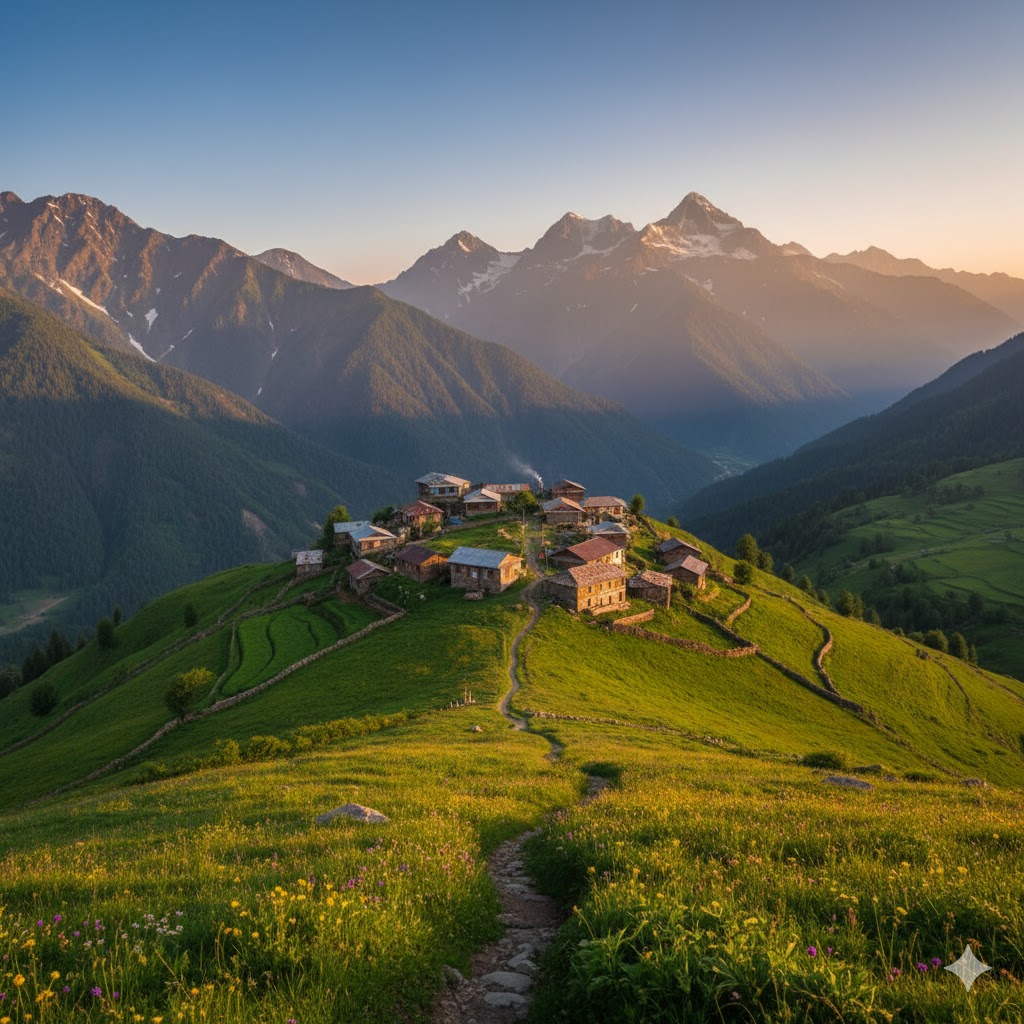
Leepa Valley — Kashmir’s Hidden Autumn Paradise
Few places in Pakistan transform as beautifully in autumn as Leepa Valley.
Golden walnut trees line the hillsides, while wooden cottages exude a fairytale charm.
The valley opens for visitors between May and November, and requires special entry permits from the DC Office, Hattian Bala.
Highlights:
- Reshian Village: Gateway to Leepa with panoramic views of snow-capped peaks.
- Dao Khan: Ideal for camping, with 360° views of lush meadows.
- Chananian Village: Known for its age-old Kashmiri handicrafts and traditional wooden architecture.
Hidden Gem:
- The Leepa River is perfect for trout fishing — locals often share tips and may even invite you to join a barbecue by the riverside.
Local Tip: Bring a 4×4 vehicle, as the road from Reshian to Leepa becomes steep and slippery after rainfall.
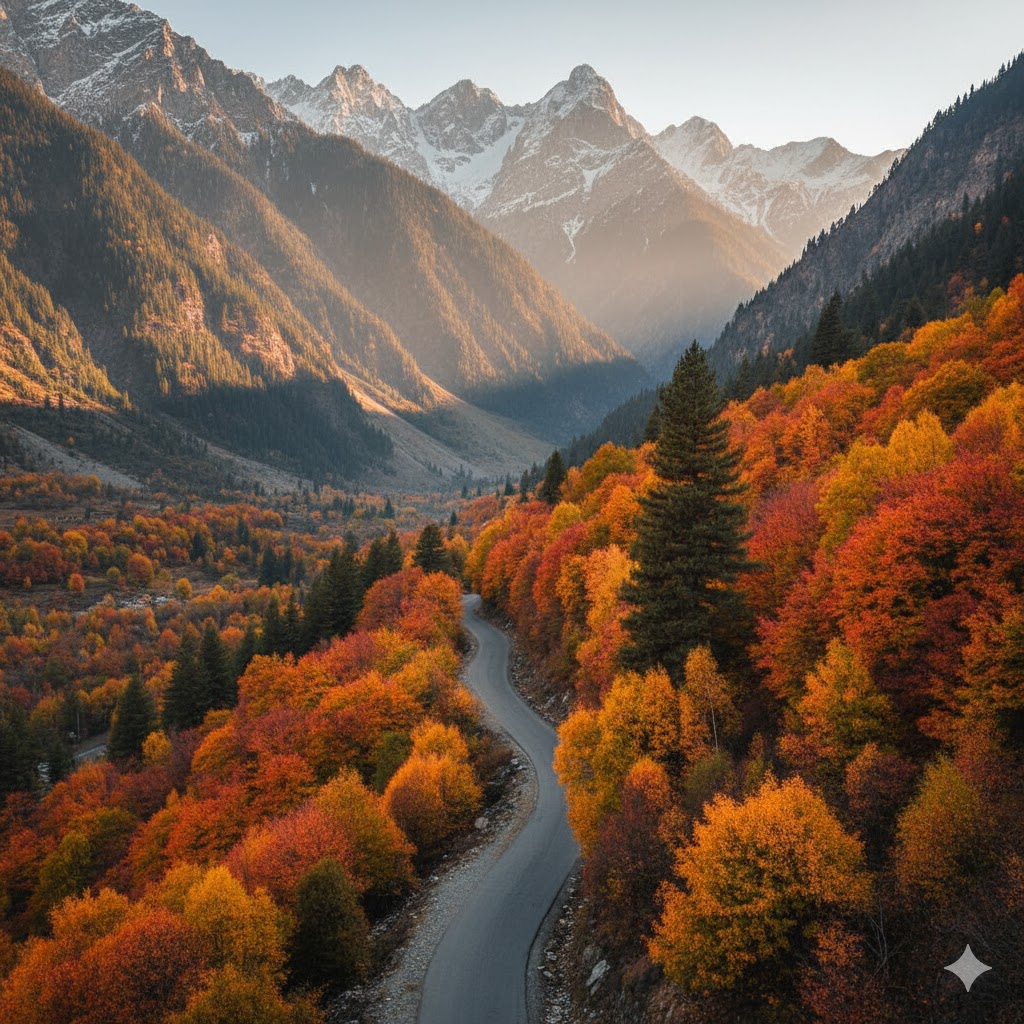
Rawalakot — The Pearl Valley
Often dubbed The Pearl Valley, Rawalakot is famous for its accessibility and gentle beauty.
It serves as a starting point for several micro-adventures — including Toli Pir, Banjosa Lake, and Poonch River picnic spots.
Ideal Route:
- Islamabad → Rawalakot (via Kahuta – Azad Pattan Road) — around 3.5 hours by car.
- Roads are paved but narrow; daytime travel is recommended.
Top Attractions:
- Banjosa Lake: A serene artificial lake ideal for boating and family picnics.
- Toli Pir Hill Station: Offers panoramic sunrise views; a must for drone enthusiasts.
- Poonch River Camping: Budget-friendly campsites with fire pits and local trout grills.
Hidden Gem:
A short trek from Banjosa leads to Sudh Gali, a misty forest valley with no commercial crowd — perfect for solitude seekers.
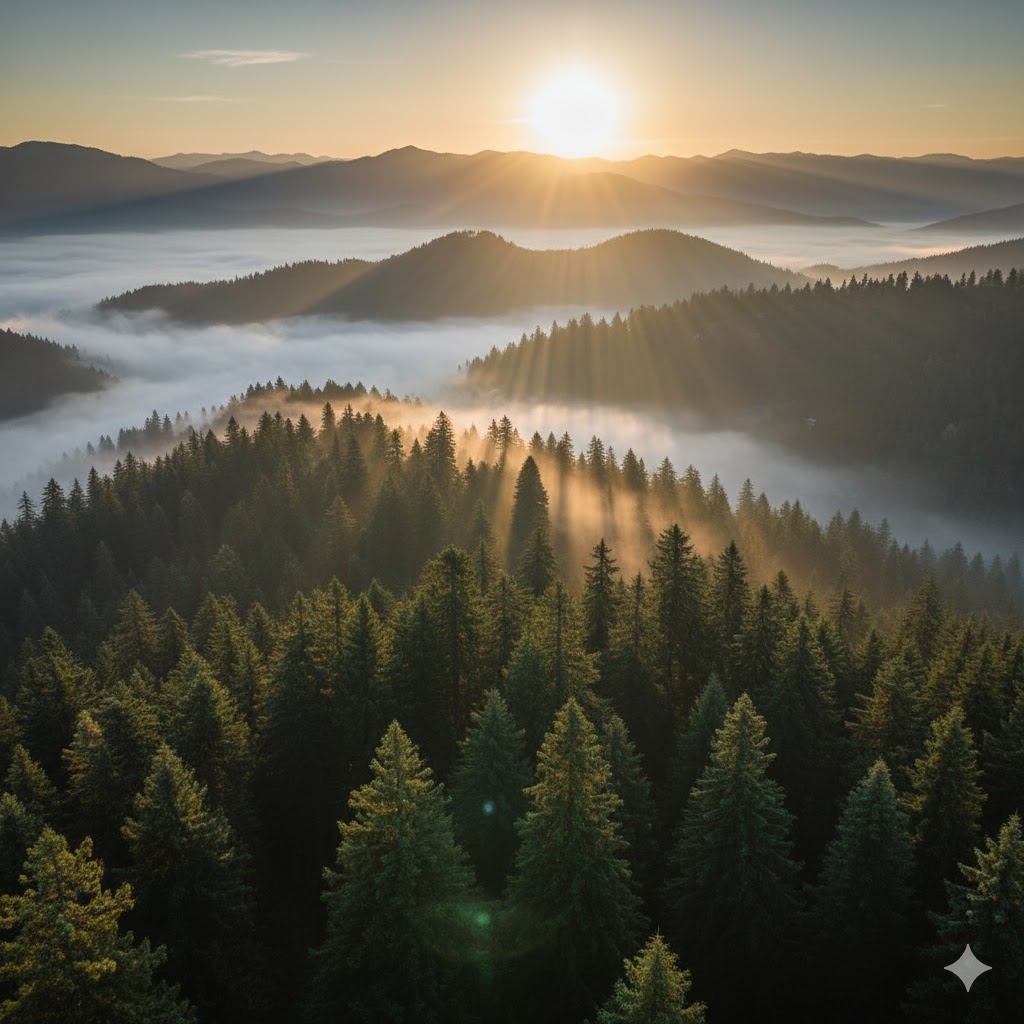
Permit Note:
No foreigner restrictions apply for Rawalakot, but CNIC/Passport registration at hotels is mandatory.
Bagh Valley — Adventure and Calm Intertwined
Bagh District offers an immersive blend of rugged mountains and friendly local culture.
It’s often skipped by mainstream travelers — making it a hidden gem for explorers who love authentic encounters.
The highlight is Las Danna, a viewpoint offering cinematic sunrise panoramas over Bagh and Poonch valleys.
Cultural Tip: Visit during Eid-ul-Azha, when local fairs and bazaars are filled with traditional Kashmiri crafts and embroidered shawls.
Hidden Gem:
- Sudhan Gali Pass, connecting Bagh to Muzaffarabad, features pine-covered trails and picnic points rarely known to outsiders.
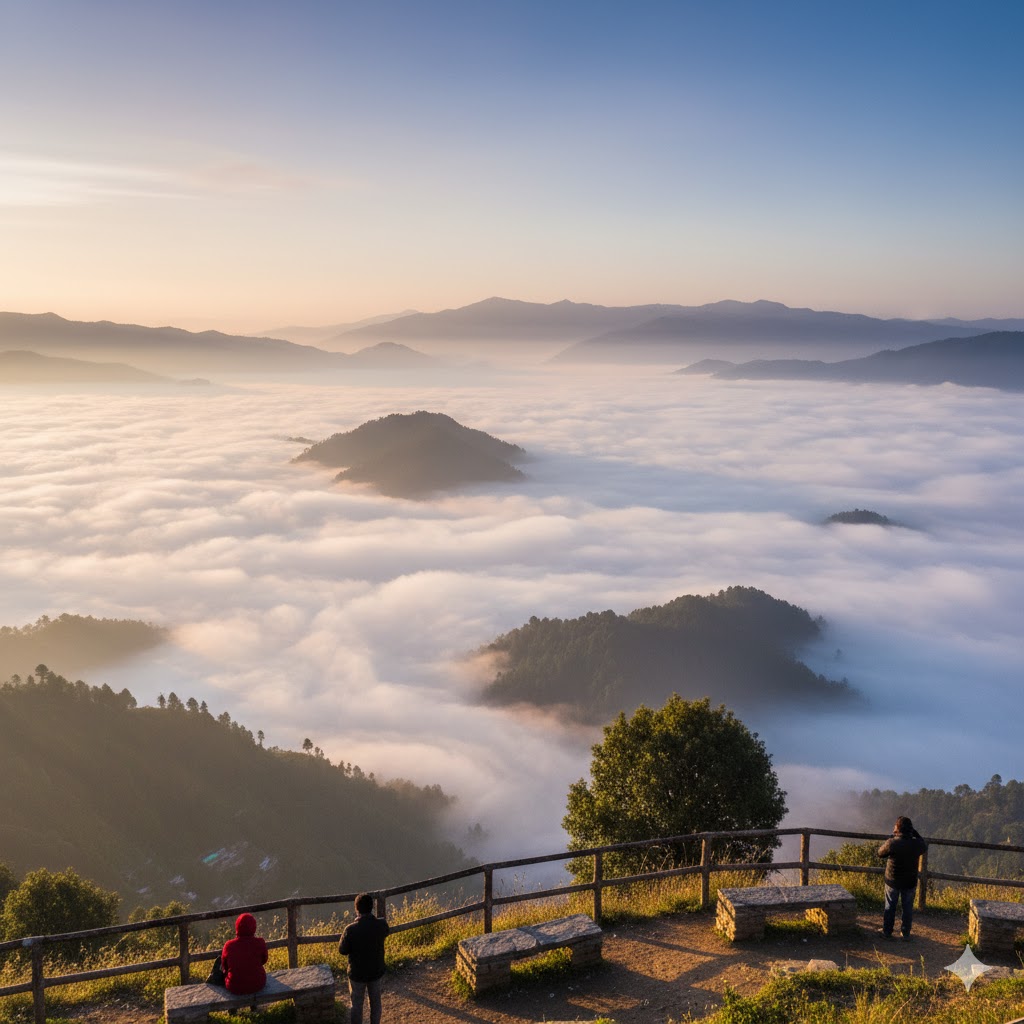
Permit Info:
Domestic travelers face no restrictions, but foreign tourists must register at Bagh Police Station before proceeding toward Sudhan Gali.
Poonch Valley — Heart of Traditional Kashmir
Poonch Valley, one of the oldest inhabited areas of Azad Kashmir, showcases deep cultural heritage and scenic riversides.
The area is accessible via Kotli–Rawalakot road, and the region thrives on agriculture, especially saffron and apples.
Must-Visit Sites:
- Tatta Pani Hot Springs: Famous for its therapeutic water — locals believe it cures joint pain.
- Abbaspur Viewpoint: Overlooks the Indian-administered side of Kashmir.
- Gulpur Waterfall: A dramatic cascade tucked inside a hidden forest near Kotli.
Local Tip: Visit in February–April for spring bloom festivals.
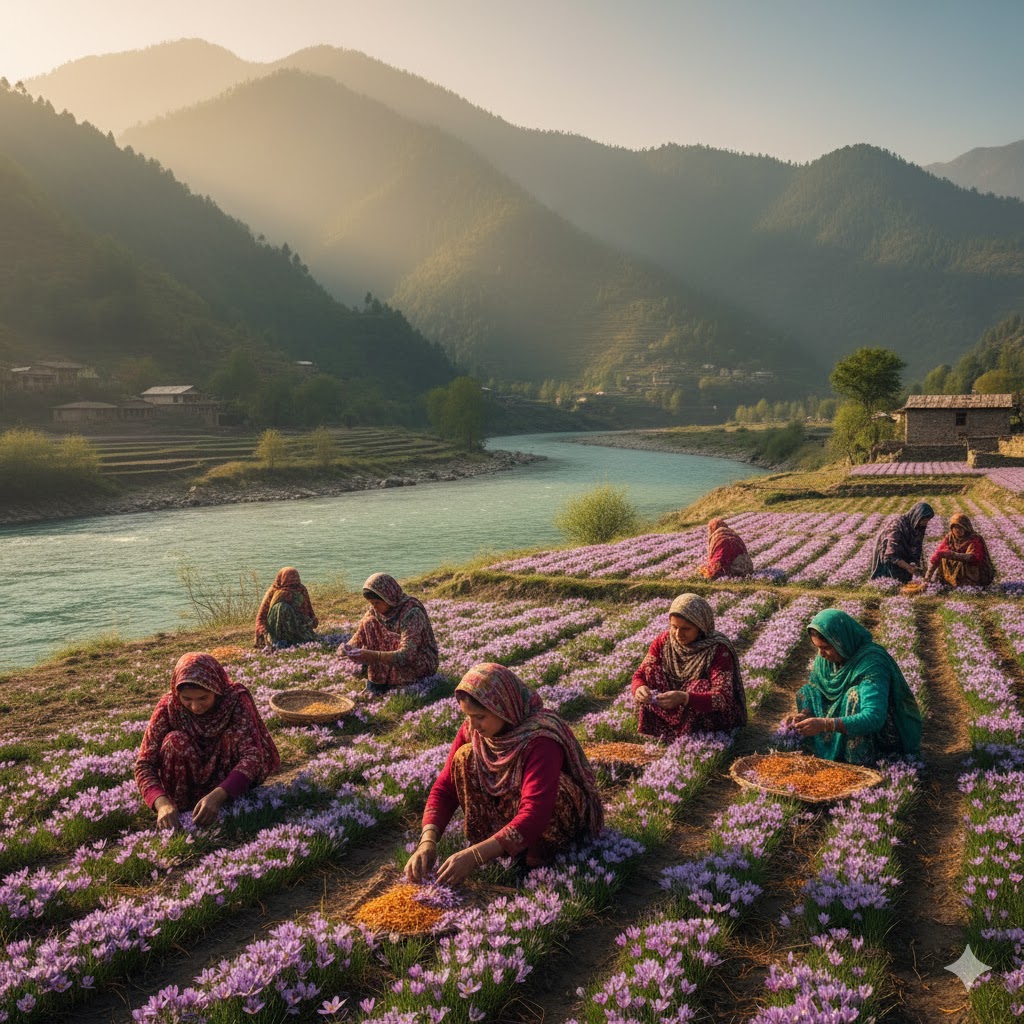
Itinerary Overview: 10-Day Azad Kashmir Road Trip (2025)
| Day | Destination | Main Attractions | Permits Required |
|---|---|---|---|
| 1 | Muzaffarabad | Red Fort, Neelum River, Local Bazaar | No |
| 2 | Keran – Upper Neelum | Neelum Viewpoint, River Picnic | No |
| 3 | Kel – Arang Kel | Trek, Suspension Bridge, Village Stay | Yes |
| 4 | Shounter Valley | Lake, Meadows, Photography | Yes |
| 5 | Leepa Valley | Autumn Colors, Dao Khan, Local Culture | Yes |
| 6 | Rawalakot | Banjosa Lake, Toli Pir | No |
| 7 | Poonch Valley | Hot Springs, Waterfall | No |
| 8 | Bagh Valley | Las Danna, Sudhan Gali | No |
| 9 | Pir Chinasi | Shrine Visit, Paragliding | No |
| 10 | Return to Muzaffarabad | Cultural Shopping, Local Cuisine | No |
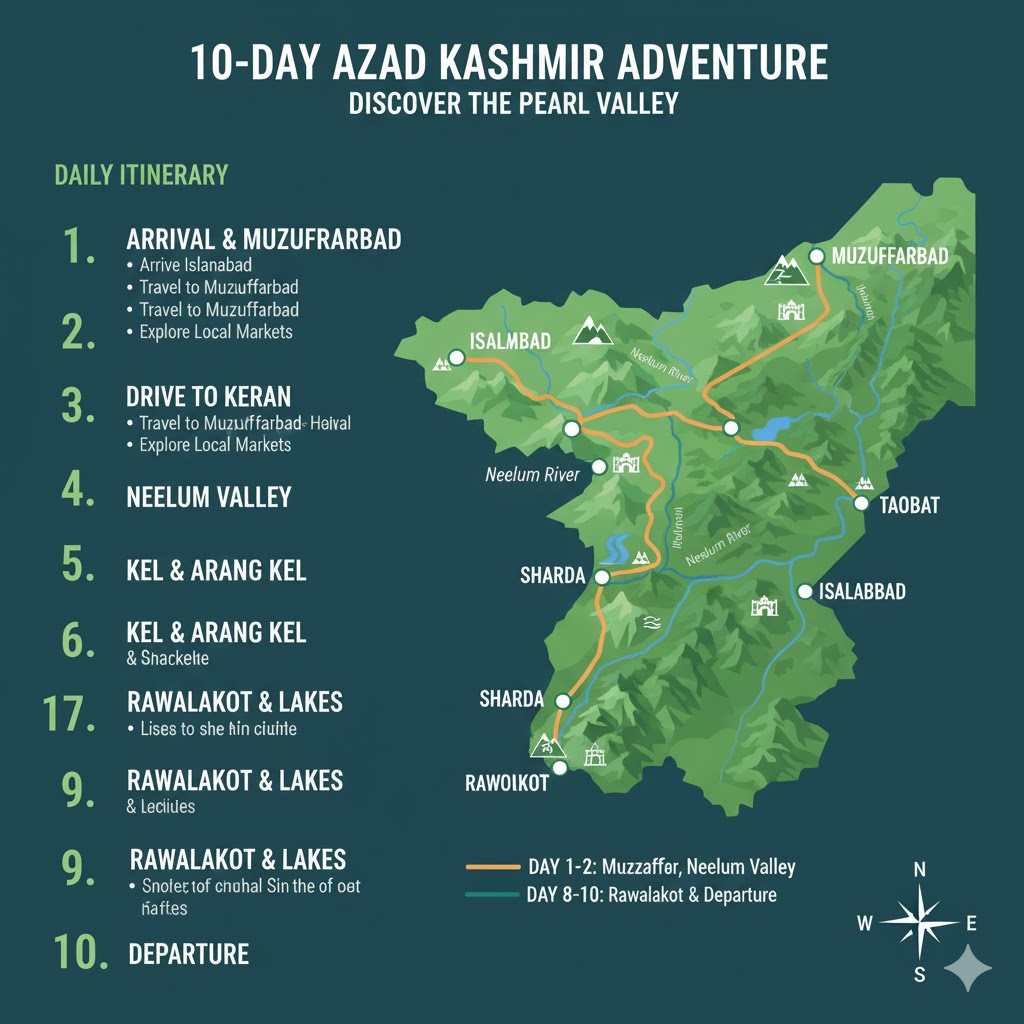
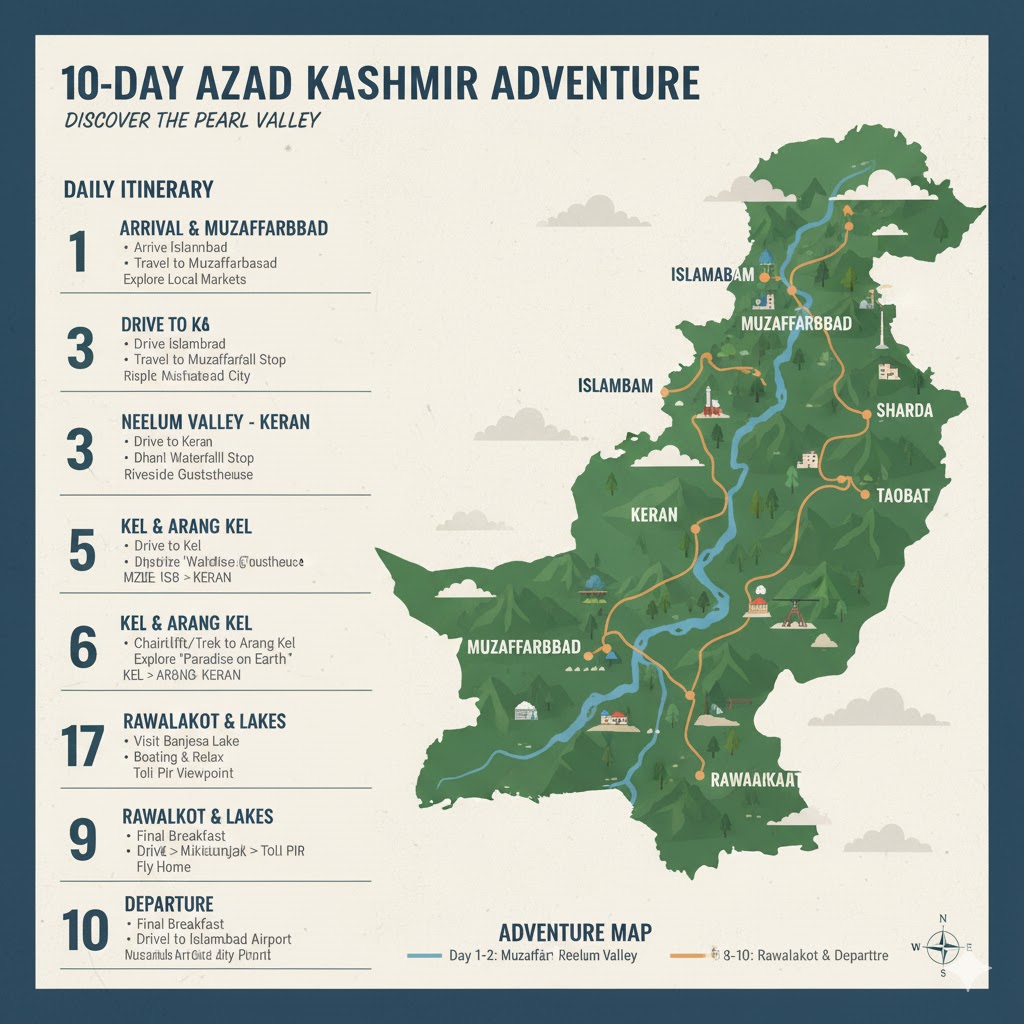
Conclusion
Azad Kashmir remains one of the most mystical, untamed, and culturally vibrant destinations in Pakistan.
From the roaring rivers of Neelum to the golden fields of Leepa and the spiritual serenity of Pir Chinasi, every turn offers a new chapter of adventure and peace.
With proper route planning and permit knowledge, your Azad Kashmir Travel Itinerary (2025) can become a journey of a lifetime — filled with soulful encounters, hidden lakes, and stories written in the lap of nature.
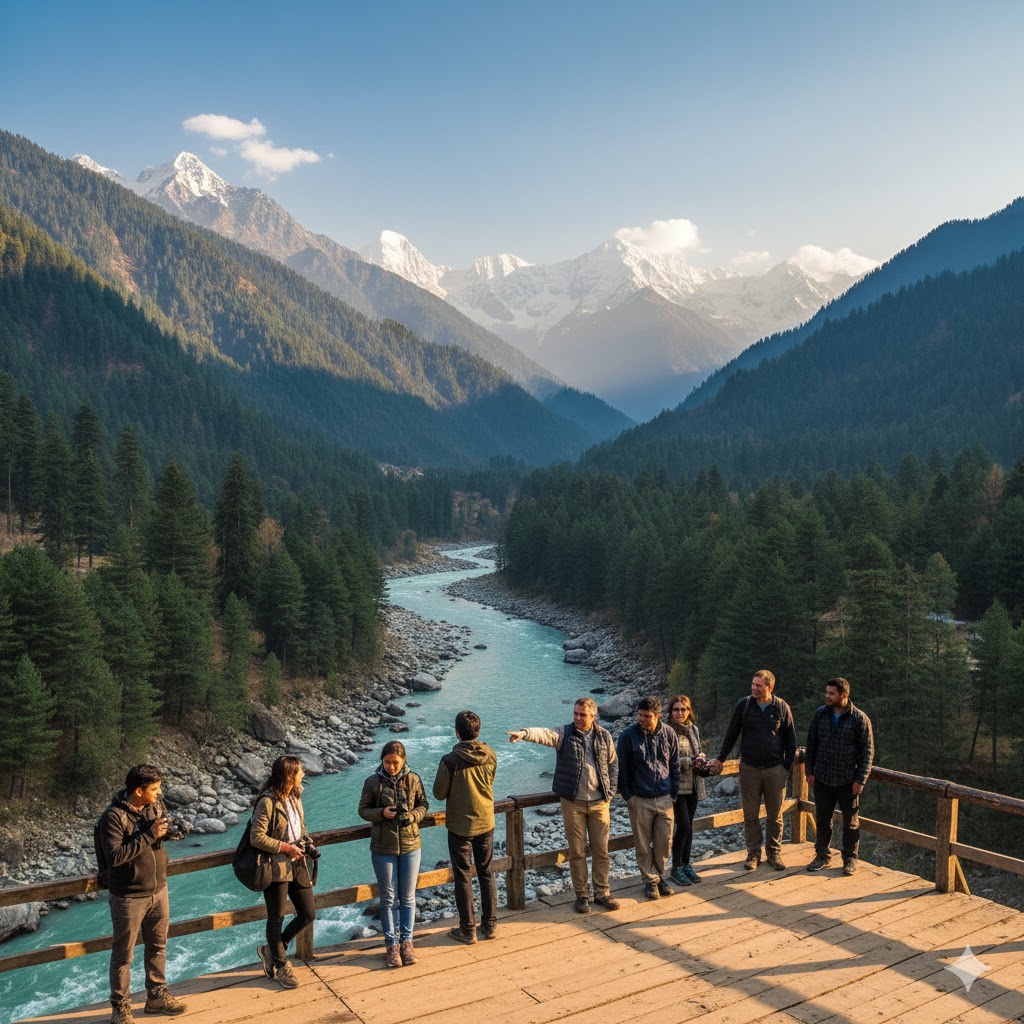
Pir Chinasi — The Spiritual Crown of Muzaffarabad
Nestled at an elevation of 2,900 meters (9,500 ft), Pir Chinasi stands as a magnificent blend of spirituality and scenic majesty. It’s a 30 km drive east of Muzaffarabad, winding through pine-covered ridges and offering breathtaking aerial views of the Jhelum River valley.
The shrine of Hazrat Shah Hussain Bukhari, a revered Sufi saint, attracts thousands of devotees every year. The air is filled with the soothing aroma of incense, mingling with the crisp mountain breeze — a perfect spiritual detox for travelers.
Highlights:
- The Pir Chinasi Viewpoint gives a 360° panoramic view of the Himalayas and Muzaffarabad city below.
- The hilltop mosque reflects traditional Kashmiri craftsmanship with its green domes and wooden latticework.
- Paragliding and hiking trails are now managed by the Tourism & Archaeology Department of AJK.
Permit Information:
No special permits are required for both domestic and foreign visitors. However, if you plan to use drones for filming, you must seek approval from the District Tourism Office, Muzaffarabad.
Local Tip: Visit early in the morning to avoid fog. Try Kashmiri kehwa at the summit tea stalls — it’s a local ritual for visitors.
Hidden Gem:
A small hiking trail behind the shrine leads to Tungas Meadow, an unmarked spot with cinematic sunrise views — ideal for quiet meditation or photography.
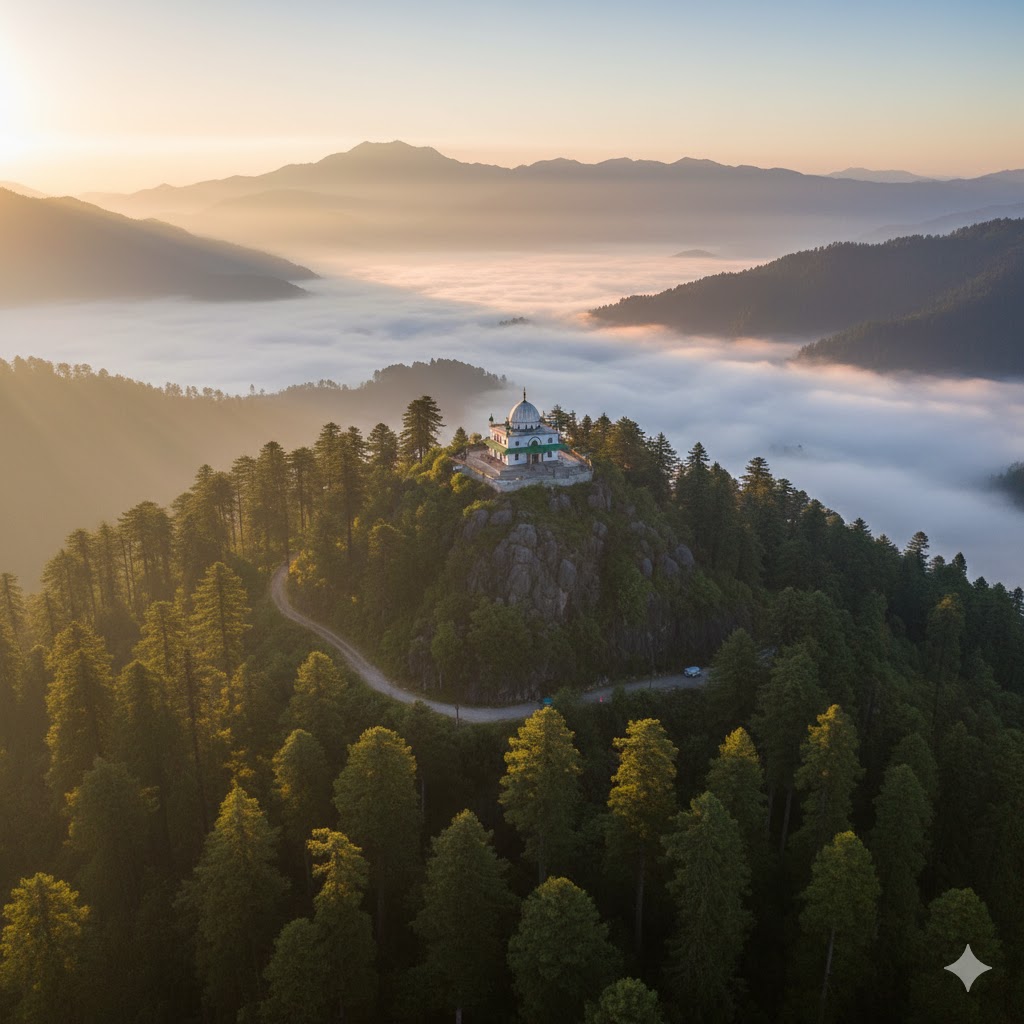
Ratti Gali Lake — The Queen of Alpine Lakes
If there’s one place that encapsulates the magic of Azad Kashmir, it’s Ratti Gali Lake. Sitting at 12,130 feet in the Neelum Valley, this glacial lake is fed by the meltwaters of surrounding snowfields. The turquoise-blue water mirrors the peaks, creating a surreal reflection under the summer sun.
To reach Ratti Gali, travelers drive from Dowarian (22 km from Athmuqam) to the base camp via jeep track. From there, a 2-hour trek (or mule ride) leads to the lake.
Highlights:
- The Ratti Gali Meadows bloom with alpine flowers between June and September.
- Ideal for camping, photography, and eco-hiking.
- Managed by AJK Wildlife Department — please avoid littering or fishing.
Permit Information:
No permit required for locals; however, foreign visitors should carry identification as there are occasional army checkpoints near the area.
Local Tip:
Stay overnight at the Ratti Gali Base Camp to witness the celestial Milky Way. The night sky here is known for its unparalleled clarity.
Hidden Gem:
On your way down, stop at Noori Nar Stream, a less-known waterfall spot with natural pools where locals often swim.
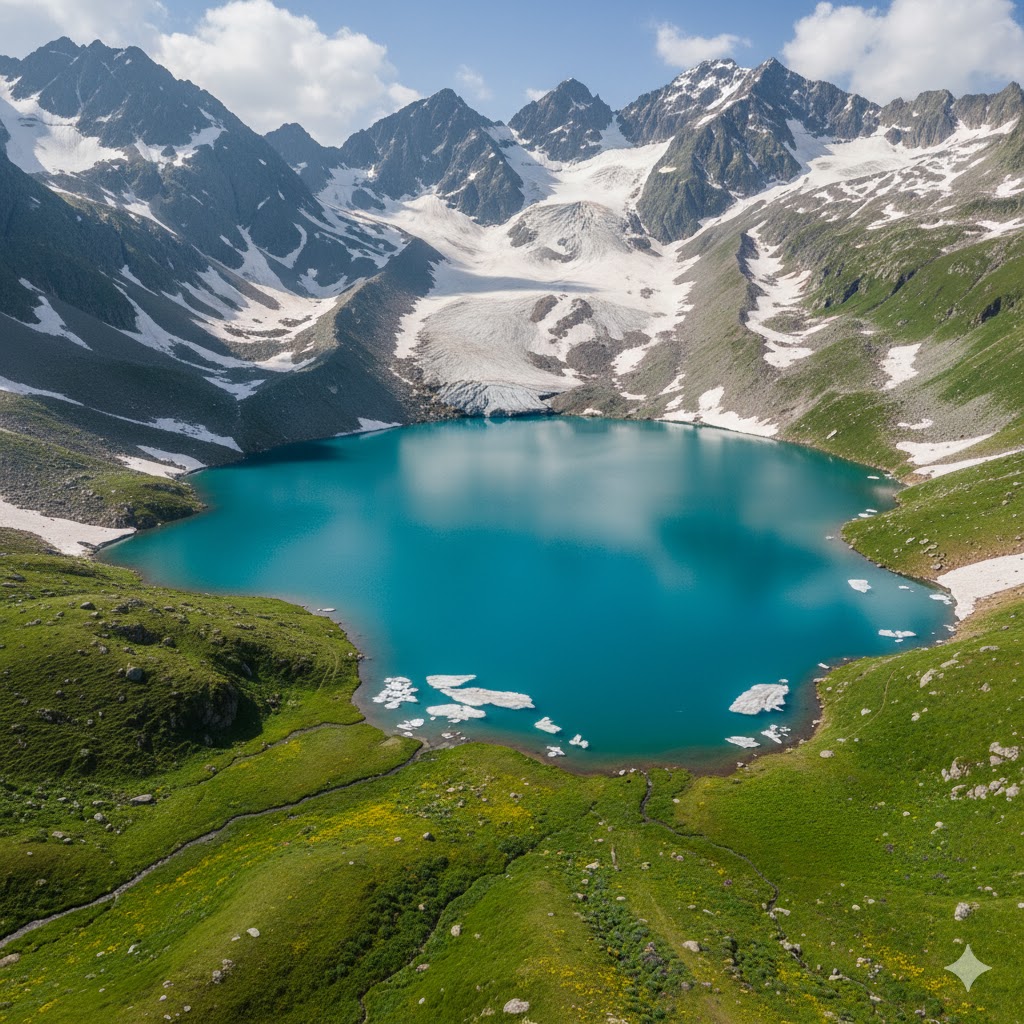
Gurez Valley — Pakistan’s Untouched Frontier
Tucked between the Neelum Valley and Astore District, Gurez Valley is one of Azad Kashmir’s most remote and least explored gems. Known for its Sheena-speaking population, ancient forts, and dramatic mountain passes, it provides a glimpse into an untouched Himalayan world.
Highlights:
- Tarkhel Village: An ancient hamlet with traditional Kashmiri wooden homes.
- Minimarg Route (via Burzil Pass): Seasonal road offering some of Pakistan’s most cinematic views.
- Gurez River (Kishanganga): Famous for rafting and local fishing.
Permit Information:
Due to its proximity to the Line of Control (LOC), foreigners must obtain permits from the Deputy Commissioner’s Office in Muzaffarabad and clearance from Interior Ministry Islamabad. Local tourists only need CNIC copies.
Hidden Gem:
The Chilum Fort ruins lie in a meadow outside Gurez. Hardly visited by outsiders, it dates back to the 17th century and overlooks the Gurez River Valley.
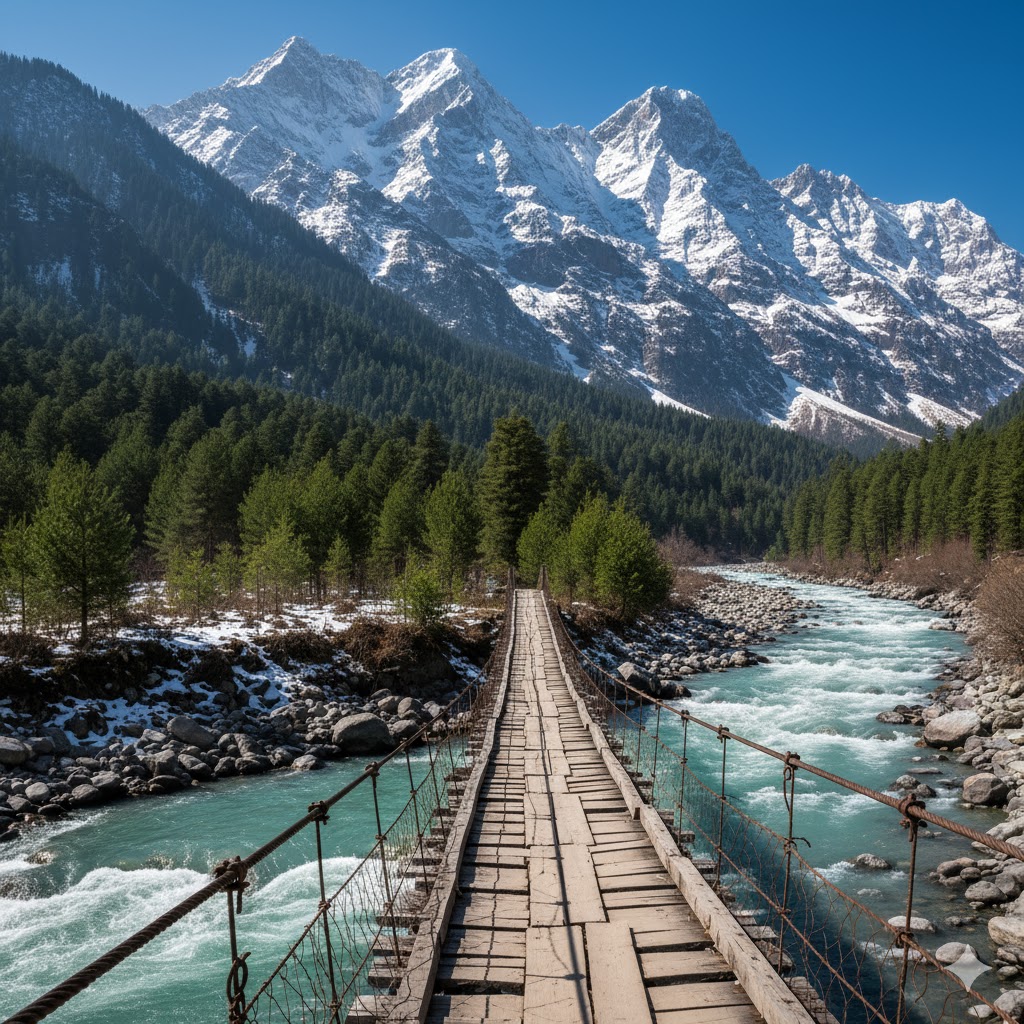
Local Tip:
Bring cash — no ATMs or stable mobile networks are available. The local guesthouses run by families offer the most authentic cultural immersion.
Banjosa & Rawalakot Revisited — Lakeside Serenity
After venturing deep into high-altitude regions, returning to Rawalakot’s Banjosa Lake feels like rediscovering calm. The lake’s emerald reflection surrounded by pine trees is perfect for picnics, boating, and photography.
Highlights:
- Lake Boating (Rs. 500 per 20 mins) for couples and families.
- Guesthouses nearby (PKR 2500–4000 per night) with lakeside views.
- Summer Cultural Fair (June–July): Local artisans exhibit embroidery and wood crafts.
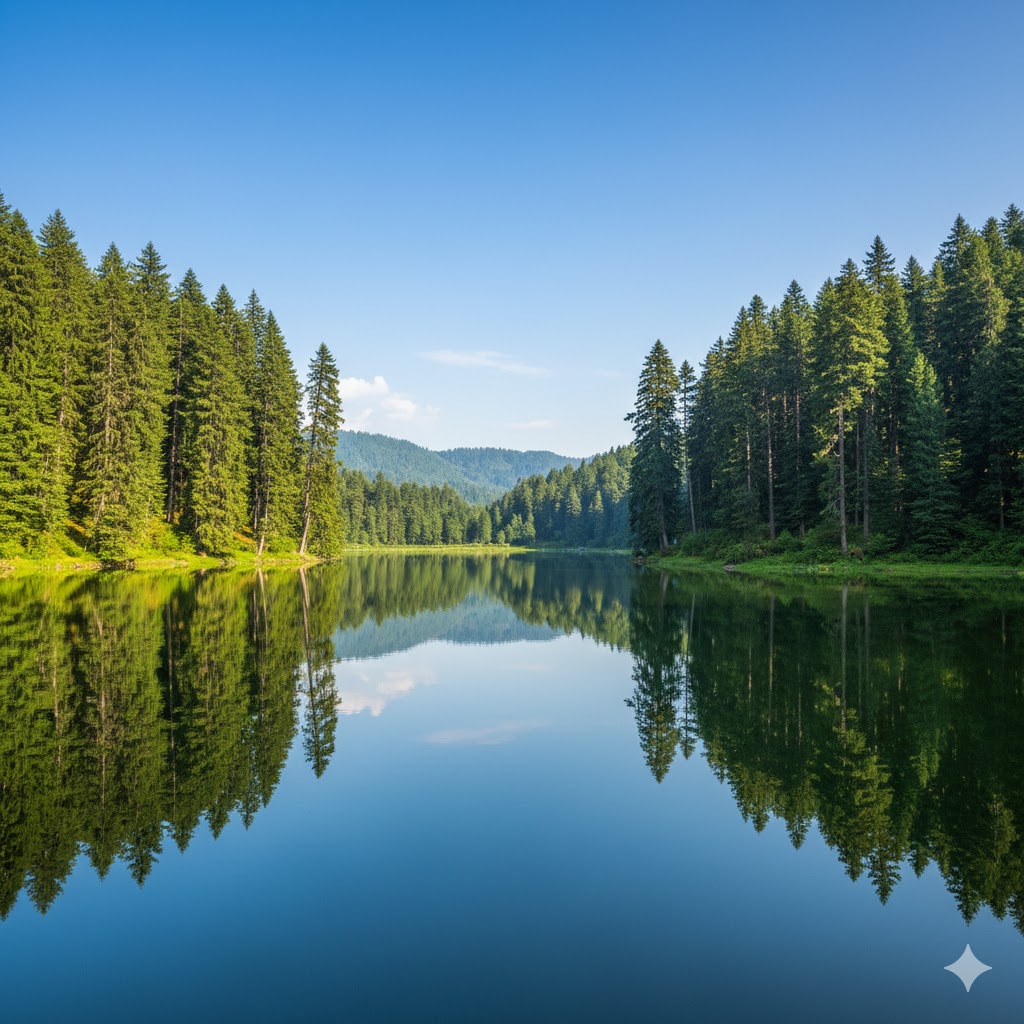
Hidden Gem:
A 2-hour jeep track from Banjosa leads to Toli Pir Meadows, often compared to Switzerland’s alpine fields. Few know that Toli Pir has a small shrine at the top where locals perform folk songs on weekends.
Local Tip: Visit in late July for the Rawalakot Tourism Festival, featuring paragliding, local cuisine stalls, and Kashmiri music.
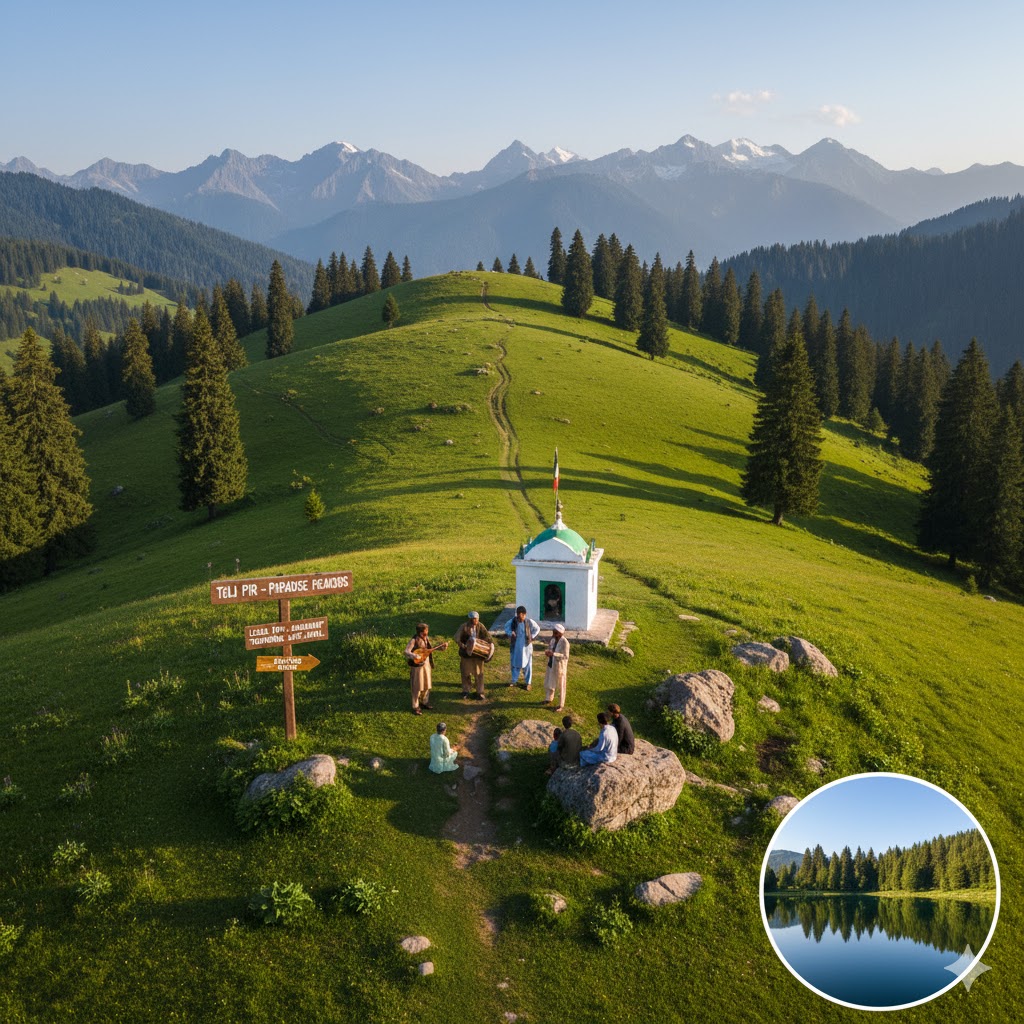
Toli Pir — The Balcony of Azad Kashmir
Standing at 2,600 meters, Toli Pir is one of the highest plateaus in the Rawalakot region and offers spectacular panoramic views of Poonch and Bagh valleys.
During spring and early summer, the meadows are blanketed with daisies and buttercups, creating a perfect hiking paradise.
Highlights:
- 3-hour hike to the summit from Lasdanna (base).
- The Toli Pir Shrine and Viewpoint Cliff are top photography spots.
- Local tea stalls sell makai roti (cornbread) and lassi, perfect after a trek.
Hidden Gem:
At the edge of the cliff, a lesser-known spot called Panj Peer Hill reveals an unobstructed view of the sunset over the western ridges — often missed by tourists.
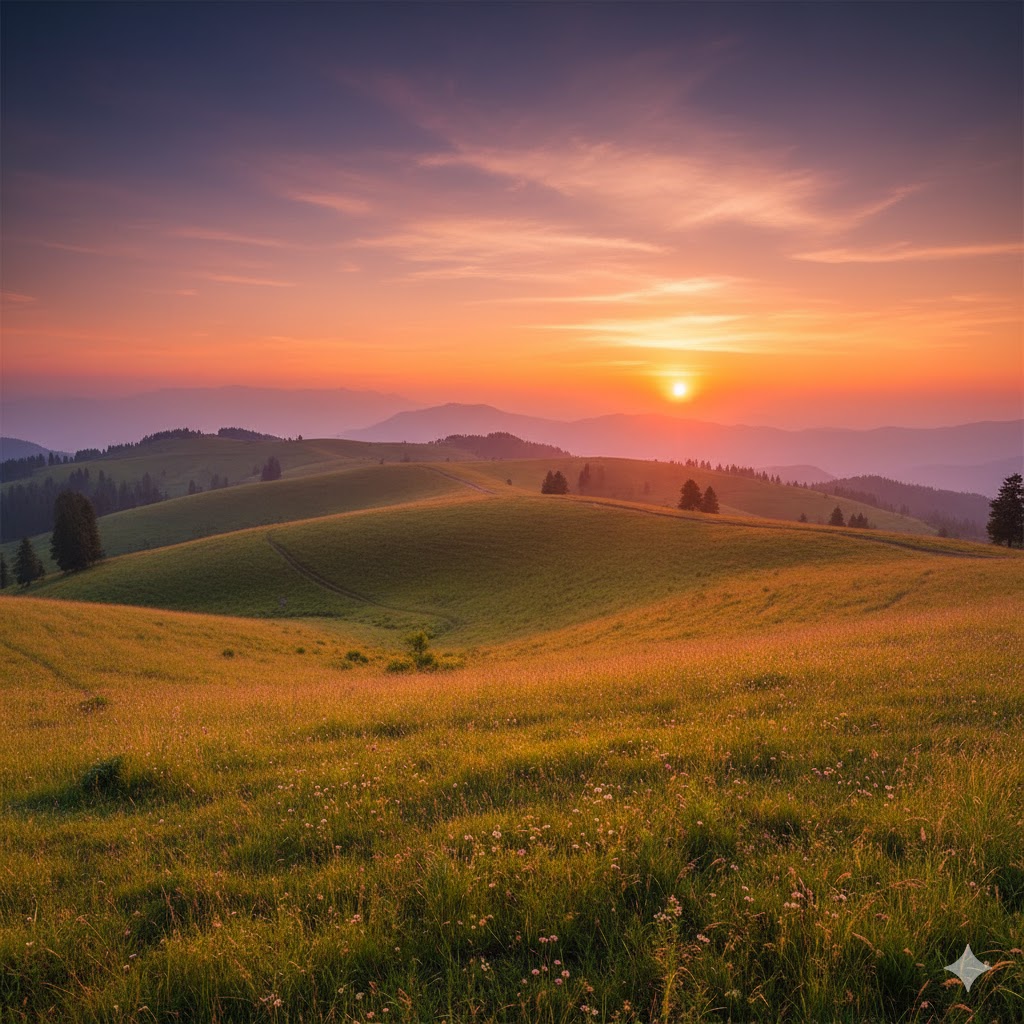
Local Tip:
Early mornings are best for drone photography — the valley remains covered in a misty white sea of clouds.
Sudhan Gali — The Gateway to Las Danna Ridge
Located between Bagh and Chikkar, Sudhan Gali serves as a resting base for mountaineers heading toward Ganga Choti Peak (3,045 m). It’s a region loved by both trekkers and solitude seekers.
Highlights:
- Ganga Choti Trek (4–6 hours): Moderate difficulty but breathtaking vistas.
- Sudhan Gali Eco Park: Managed by the Tourism Department with basic camping facilities.
- Forest Walks: Great for bird watching and photography.
Hidden Gem:
There’s a lesser-known spring called Rutti Nar, 2 km before Ganga Choti trailhead — crystal-clear water that locals consider sacred.
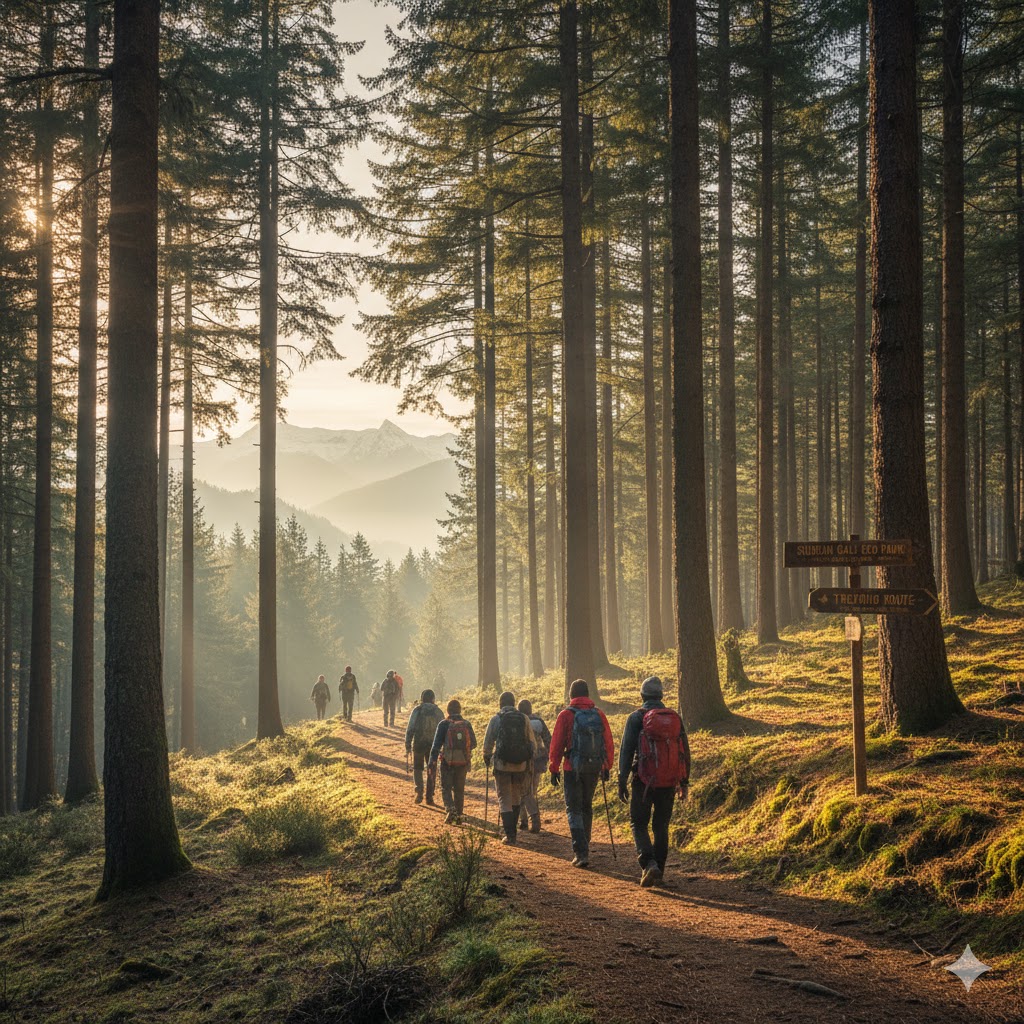
Permit Info:
No permits required; however, visitors should carry CNICs for routine security checks.
Local Tip:
Stay overnight in local guesthouses for around PKR 2000–3000. In autumn, the valley glows golden, perfect for cinematic travel shots.
Local Cuisine Experiences Across Azad Kashmir
Exploring Azad Kashmir is incomplete without savoring its rich culinary landscape — a fusion of Kashmiri, Pahari, and Northern Pakistani flavors.
| Dish | Region | Description |
|---|---|---|
| Gushtaba | Muzaffarabad | Soft meatballs in creamy yogurt sauce — traditionally served at weddings. |
| Rogan Josh | Neelum Valley | Spicy lamb curry rich in saffron and fennel. |
| Hareesa | Leepa | Thick porridge of wheat, meat, and butter eaten during winter. |
| Noon Chai | Rawalakot | Pink salted tea — a staple of Kashmiri hospitality. |
| Phirni | Bagh | Sweet rice pudding flavored with cardamom and almonds. |
Local Tip: Try Gushtaba at Wadi Restaurant (Muzaffarabad) and Rogan Josh at Kel Valley Inn for authentic flavors.

Winter Tourism in Azad Kashmir — A Frozen Fairytale
When snow blankets the valleys of Azad Kashmir, the region transforms into a silent white wonderland where serenity meets adventure. From December to March, snow-laden peaks, frozen lakes, and misty pine forests invite travelers into a world that feels untouched by time.
Top Winter Spots:
- Pir Chinasi (Muzaffarabad): The hilltop shrine turns into a snow-trekking paradise, where students and adventure vloggers film cinematic reels amidst frosted pine trees.
- Rawalakot & Banjosa: Gentle snowfall creates the perfect romantic escape — with lake reflections and foggy ridges.
- Leepa Valley: Roads open briefly in mid-December, revealing a spectacular snow curtain over wooden chalets and rice terraces.
- Neelum Valley (Kel, Arang Kel): Frozen rivers and snow-covered bridges attract photographers worldwide.
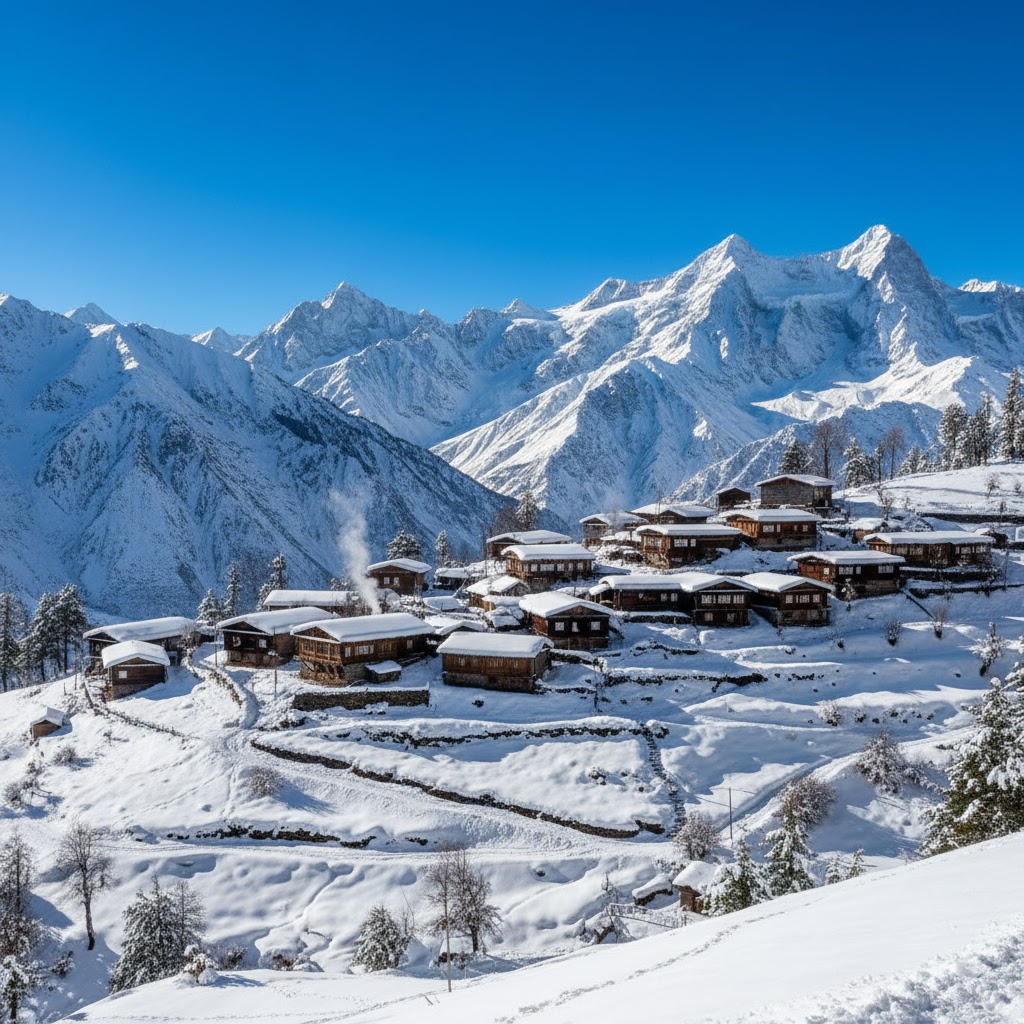
Winter Activities:
Snow-trekking, paragliding in Rawalakot, jeep safaris, and snowboarding in the Leepa slopes. The Tourism & Archaeology Department of AJK now offers guided winter camps (PKR 20,000–35,000) including local guides and permits.
Local Tip:
Carry snow chains for vehicles and thermal clothing. Book in advance; remote areas have limited winter accommodation.
🎭 Cultural Festivals and Heritage Events of Azad Kashmir
Beyond its breathtaking landscapes, Azad Kashmir is a cultural canvas of music, food, and Sufi devotion. Festivals here unite communities through poetry, dance, and culinary feasts.
1. Urs of Pir Chinasi (Muzaffarabad)
Every April, thousands of devotees gather to honor Hazrat Shah Hussain Bukhari. The festival features devotional qawwalis, community feasts, and candle-lit nights.
- Entry: Free
- Highlight: Traditional dhol damaka performances at dusk.
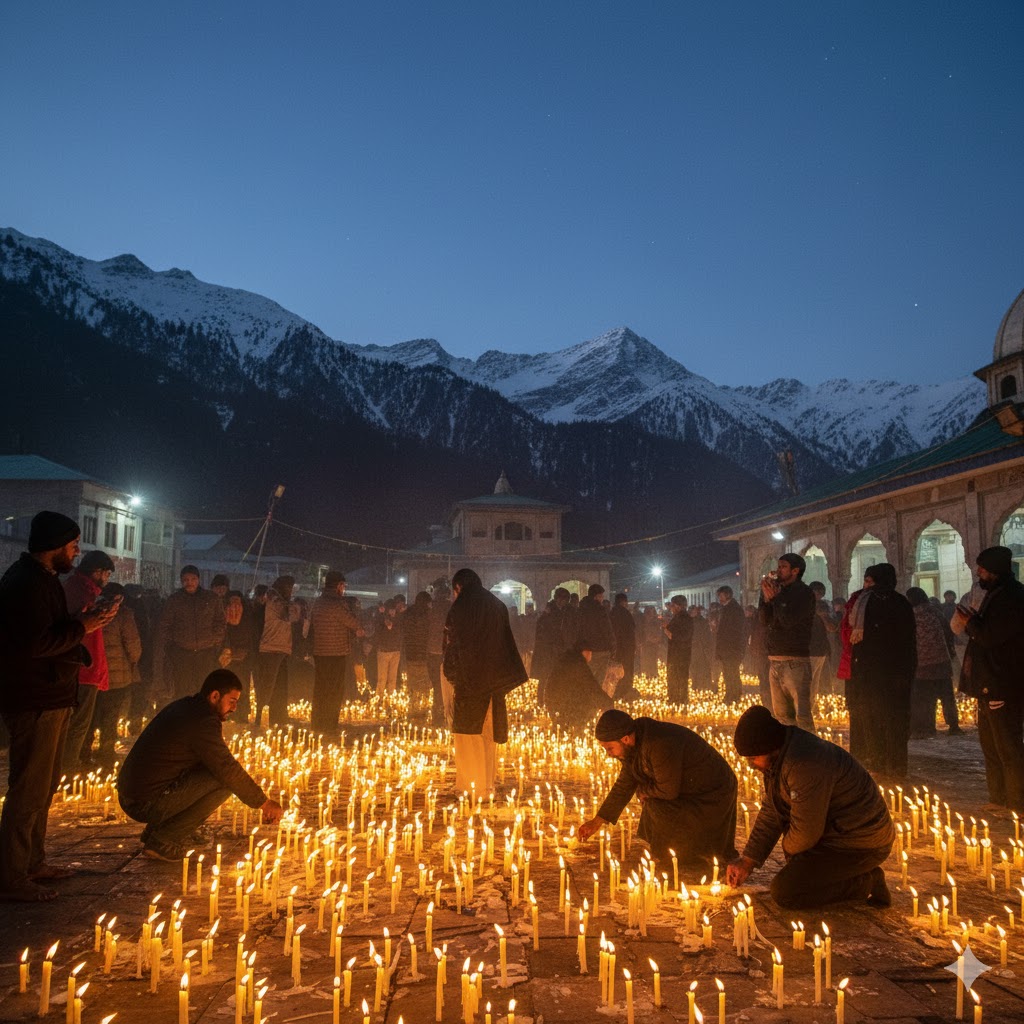
2. Neelum Cultural Festival
Held annually at Athmuqam, this event showcases Kashmiri handicrafts, woodwork, and folk songs.
- Hidden Gem: Try the handmade Namda rugs from Kel village — locals use mountain wool.
- Entry Ticket: Rs. 500 for tourists.
3. Rawalakot Summer Fair
Taking place in July at Banjosa Lake Park, this fair is packed with youth sports, paragliding shows, and live music.
- Highlight: Paragliders from Islamabad clubs perform over the lake.
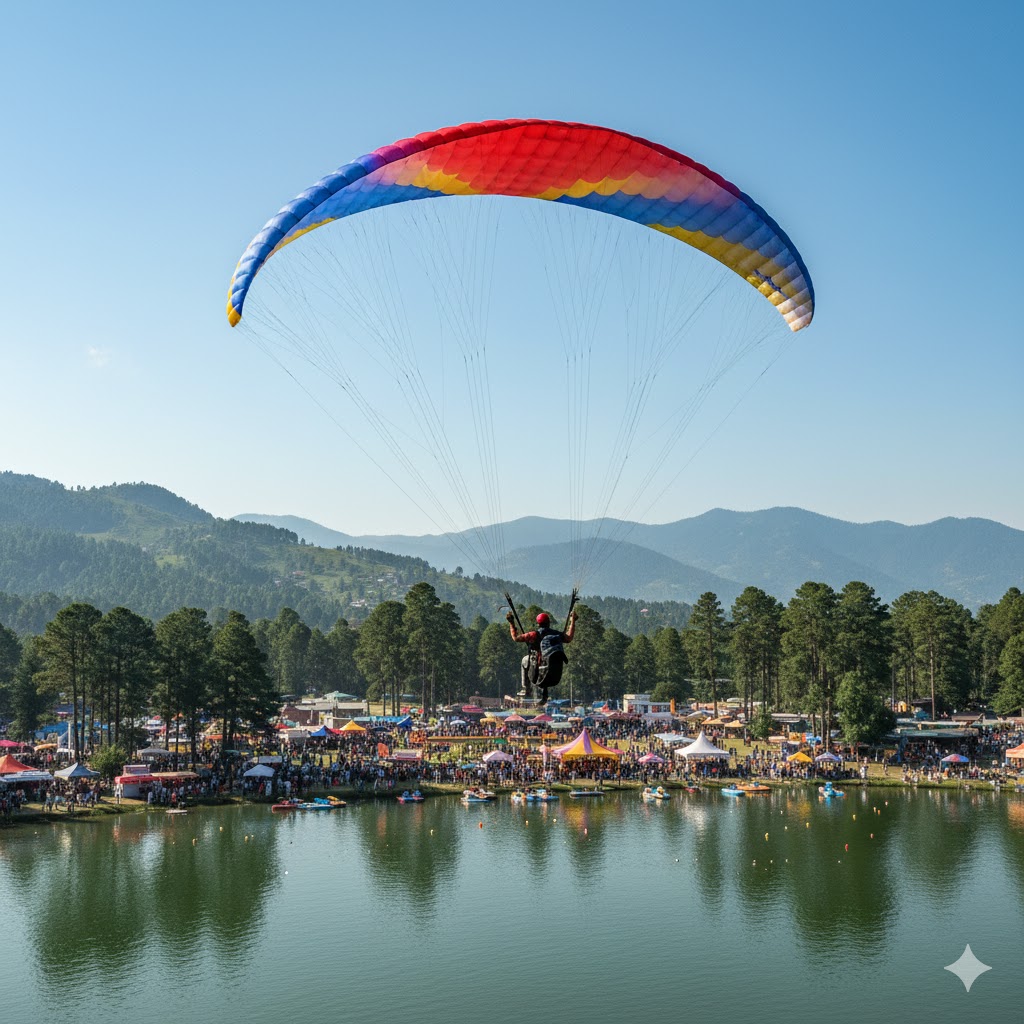
4. Leepa Walnut Harvest Festival
October brings walnut picking, local dances, and mountain food stalls.
- Hidden Gem: Homemade walnut halwa sold by families in Reshian village.
- Entry: Free, but donations to local farmers appreciated.
🌿 Sustainable & Responsible Tourism in Azad Kashmir (2025 Edition)
With rising tourism in 2025, sustainability has become a core part of AJK’s travel policy.
Eco-Practices Every Traveler Should Follow:
- Use reusable bottles — plastic ban in Neelum & Leepa areas.
- Support local homestays to ensure income stays within the valley.
- Avoid drone noise near mosques, schools, and wildlife zones.
- Respect army check posts and no-photography zones.
Community Tourism Projects
The AJK Tourism Board has introduced community-run lodges in Arang Kel and Toli Pir, where villagers host guests with traditional hospitality.
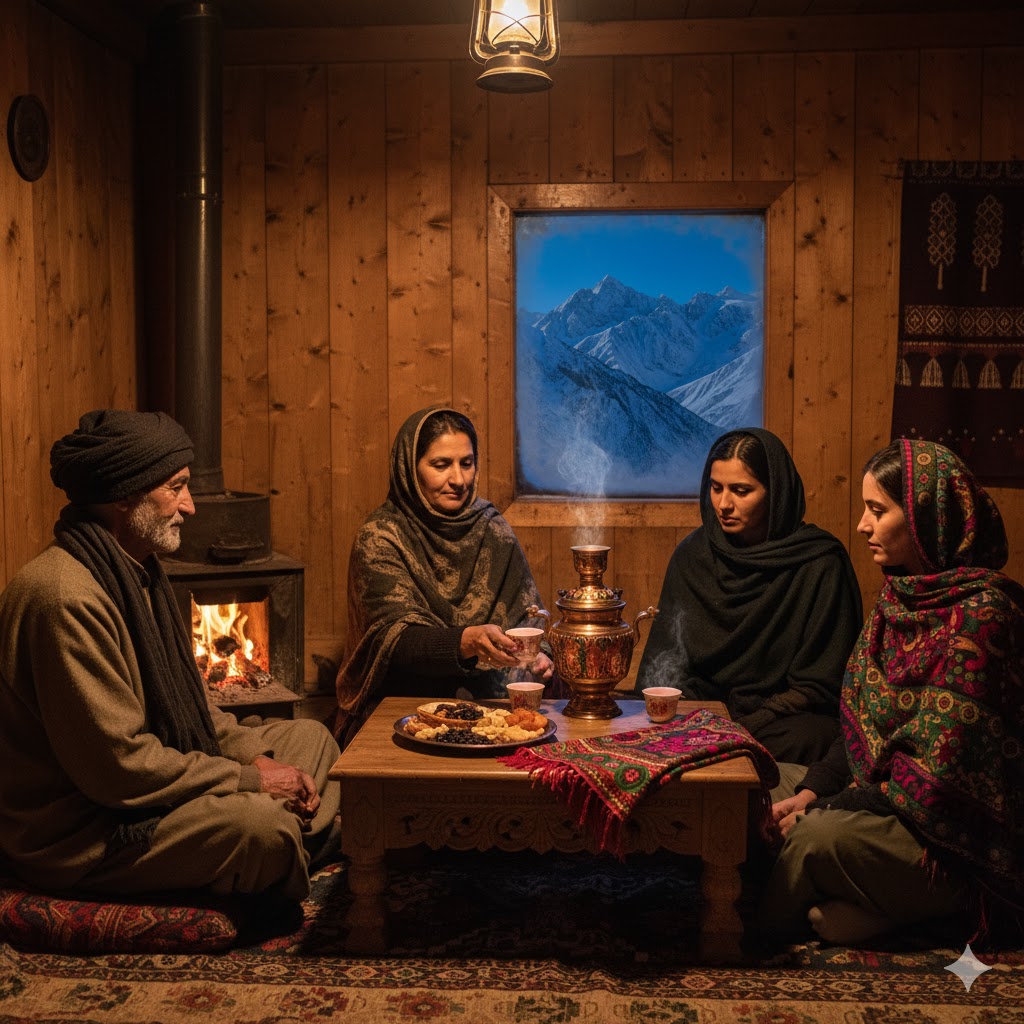
Local Tip: Always greet locals with “Aslam o Alaikum” — it earns genuine smiles and often opens doors to unseen experiences.
📸 Top Photography Spots for 2025 Travelers
| Spot | Best Time | Photography Tip |
|---|---|---|
| Ratti Gali Lake | July–Sept | Use ND filter to capture mirrored reflections. |
| Toli Pir Meadows | May–Oct | Shoot during golden hour; fog adds cinematic depth. |
| Pir Chinasi Peak | March–May | Capture drone shots at sunrise over Muzaffarabad city. |
| Arang Kel Village | Sept | Wide-angle lens for capturing wooden houses in mist. |
| Leepa Valley | Oct–Nov | Best for capturing harvest colors and Kashmiri life. |
Pro Tip: For travel vloggers, carry lightweight mirrorless cameras (Sony ZV-E10, Canon R10) — perfect for documenting road journeys without heavy equipment.
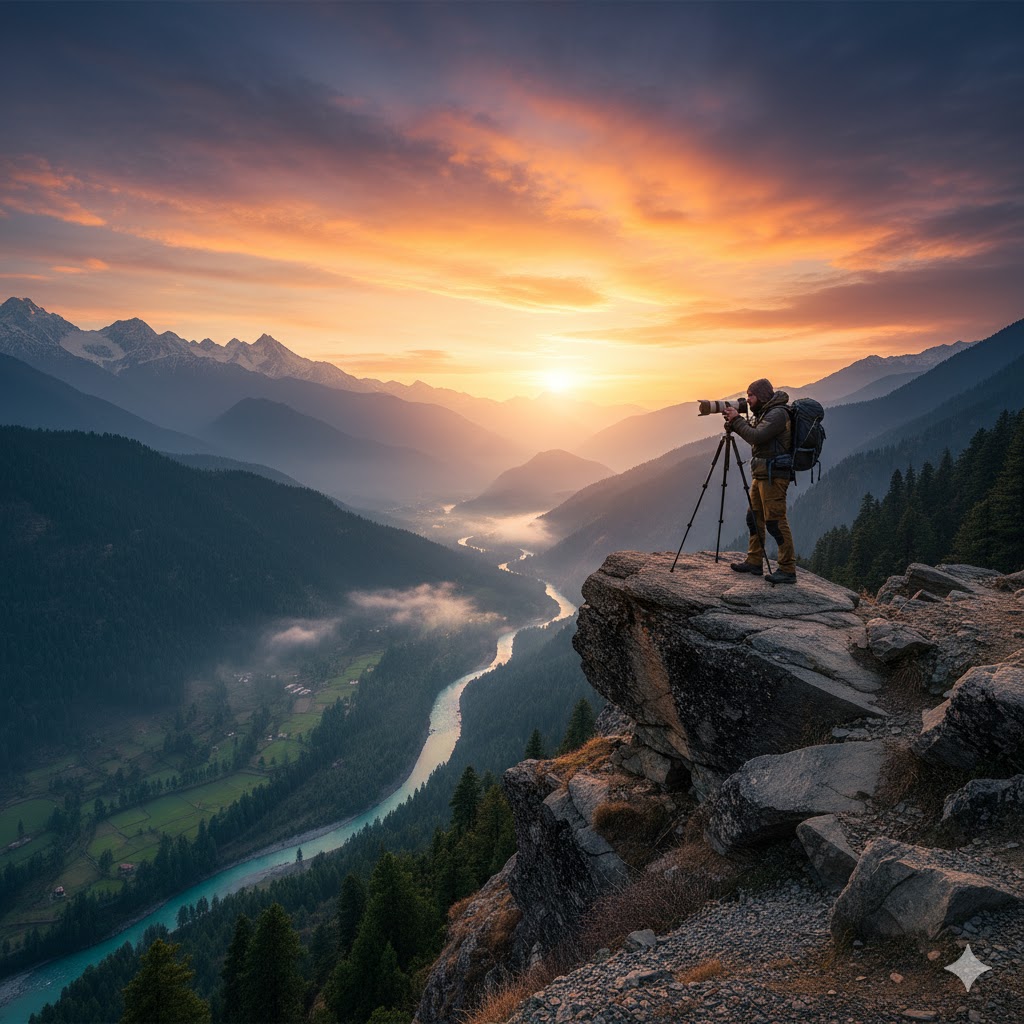
💸 Budget & Travel Costs for 2025
| Category | Estimated Cost (PKR) | Notes |
|---|---|---|
| Local Transport | 5,000–10,000 | Jeep hire for Ratti Gali, Leepa, Kel. |
| Accommodation | 2,000–6,000 | Guesthouses or lodges per night. |
| Meals | 1,000–1,500 | Local eateries — try mutton yakhni. |
| Permits & Tickets | 0–2,000 | Depending on region & foreign clearance. |
| Guide Services | 3,000–6,000 | For mountain routes & local exploration. |
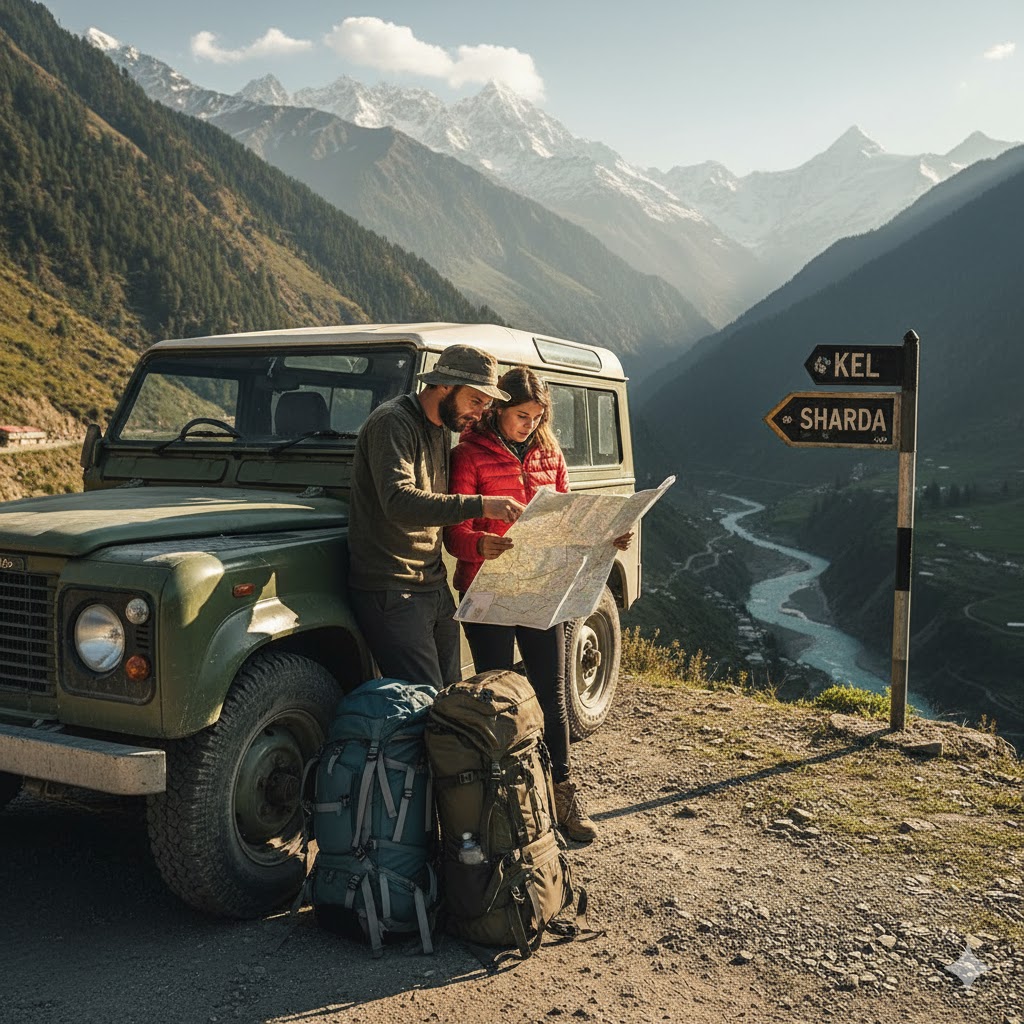
🧭 10 Detailed FAQs — Azad Kashmir 2025
1. Do I need a permit to visit Neelum or Leepa Valley?
For local tourists, only CNIC is needed. Foreigners require clearance from the Ministry of Interior (Islamabad) and must register at the Muzaffarabad DC Office.
2. When is the best time to visit Azad Kashmir?
From April to October, when roads are clear and meadows bloom. Winter (Dec–Feb) is ideal for snow tourism.
3. Can I self-drive to Arang Kel?
You can drive till Kel, then hike or take a cable car to Arang Kel (20 mins). 4×4 recommended.
4. Are ATMs available in Neelum Valley?
Limited — only in Athmuqam and Keran. Bring cash for remote areas.
5. How is internet connectivity?
Zong and SCOM work best; signal drops beyond Kel and Leepa.
6. Are there local festivals during summer?
Yes — Rawalakot Summer Fair, Neelum Cultural Festival, and Pir Chinasi Urs are the most popular.
7. Is camping allowed in Ratti Gali and Toli Pir?
Yes, in designated areas. Eco-camping rules apply (no litter, biodegradable waste only).
8. What kind of food should I expect?
Traditional Kashmiri dishes — Rogan Josh, Gushtaba, Noon Chai, Hareesa. Most guesthouses offer homemade meals.
9. Are there local guides available?
Yes — certified guides from AJK Tourism Board operate in Muzaffarabad, Kel, and Leepa.
10. Can I visit with family and children?
Absolutely! Azad Kashmir is family-friendly with clean resorts, safe roads, and gentle hospitality.
Traveler Guide: The Living Paradise of 2025
Azad Kashmir isn’t just a destination — it’s an unfolding love story between the traveler and the land. From Pir Chinasi’s spiritual peaks to the mirrored waters of Ratti Gali, every route tells a story of resilience, community, and natural wonder.
The 2025 travel season invites a new kind of explorer — those who value eco-conscious travel, cultural immersion, and photography that speaks emotion.
Plan your Azad Kashmir travel itinerary wisely, respect local traditions, and you’ll carry home not just photos, but stories that breathe for a lifetime.
